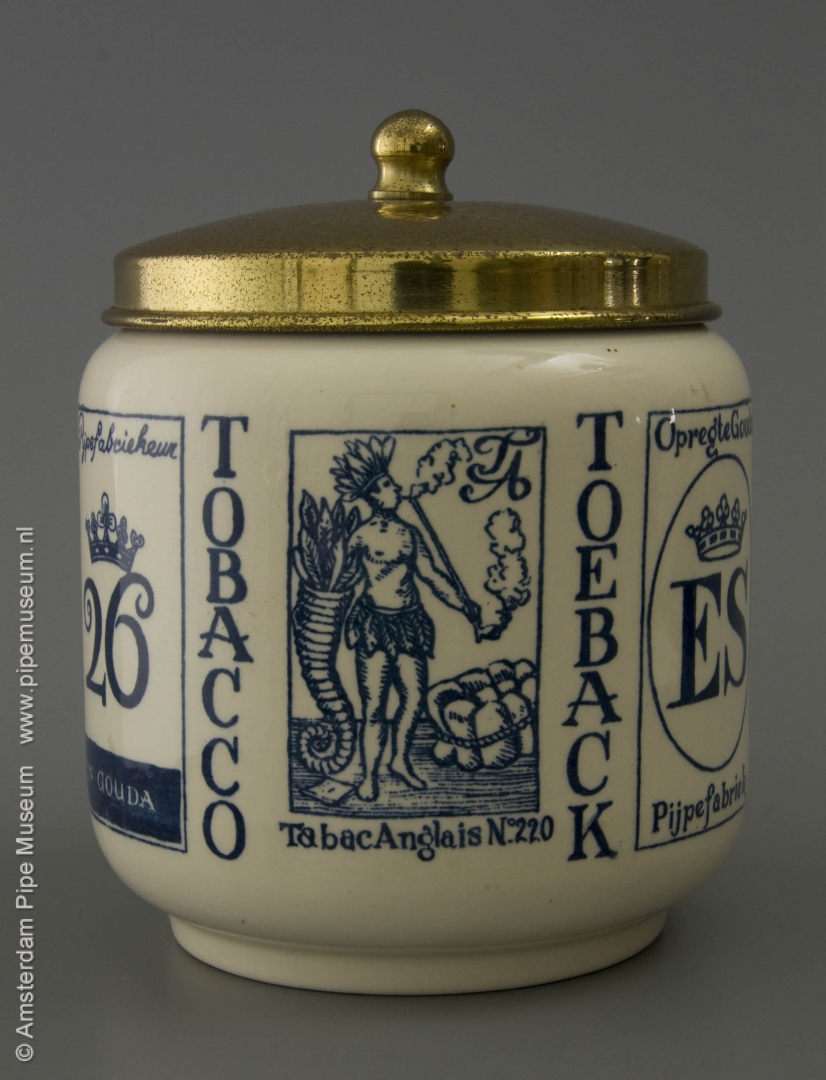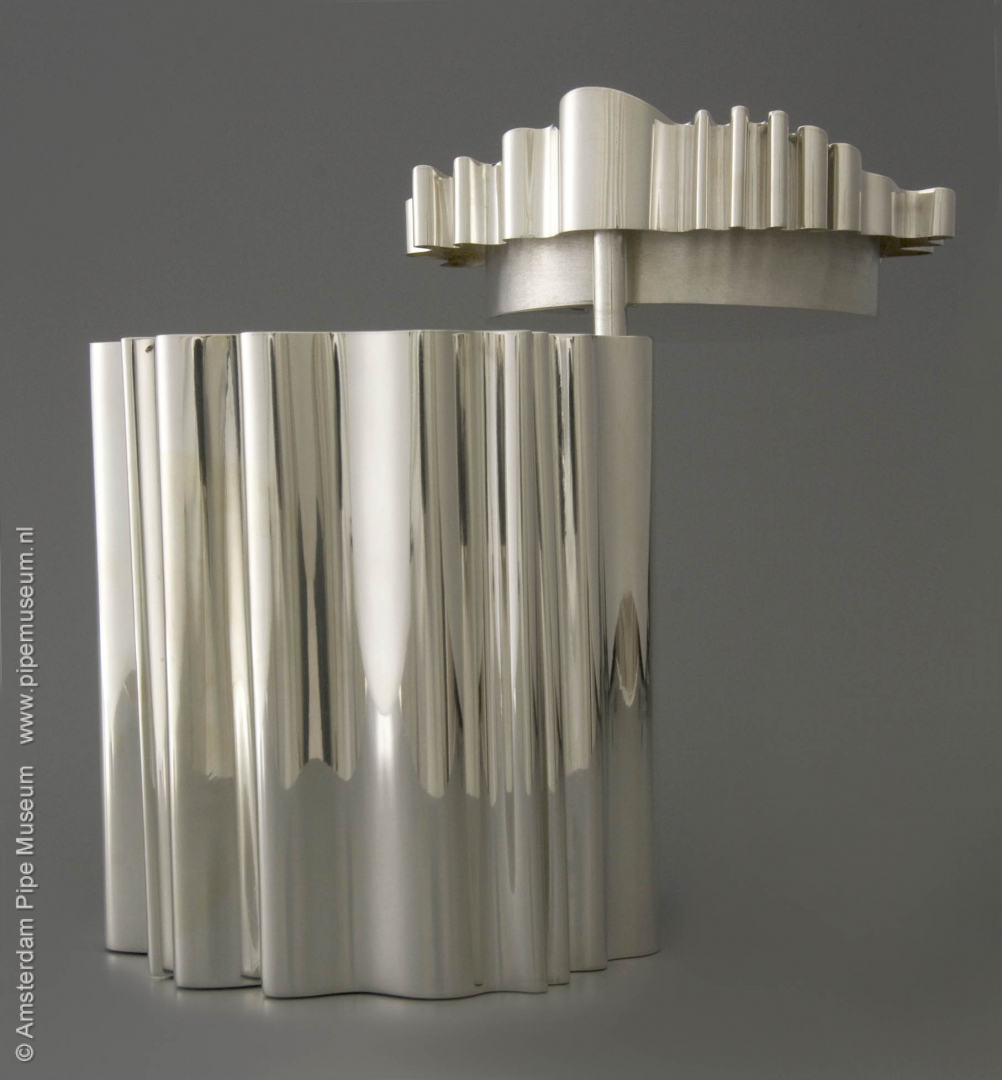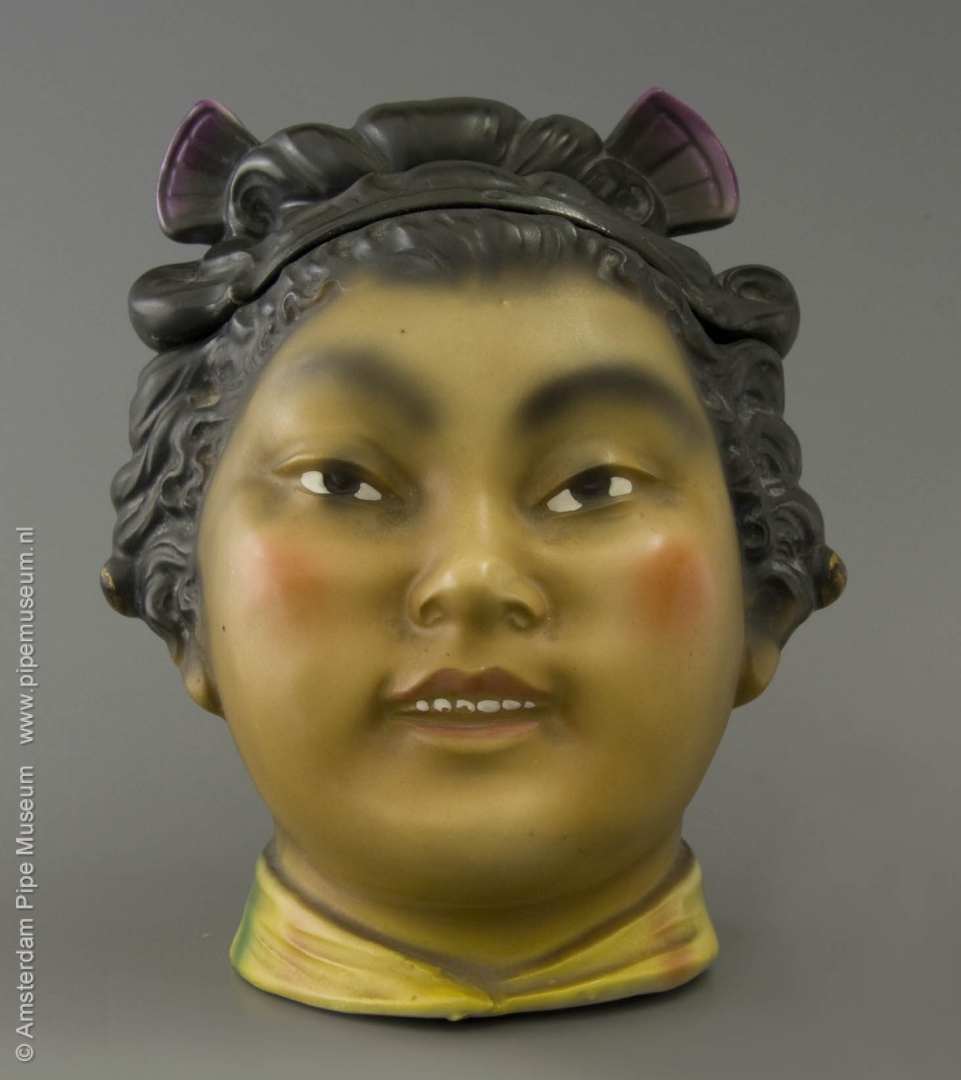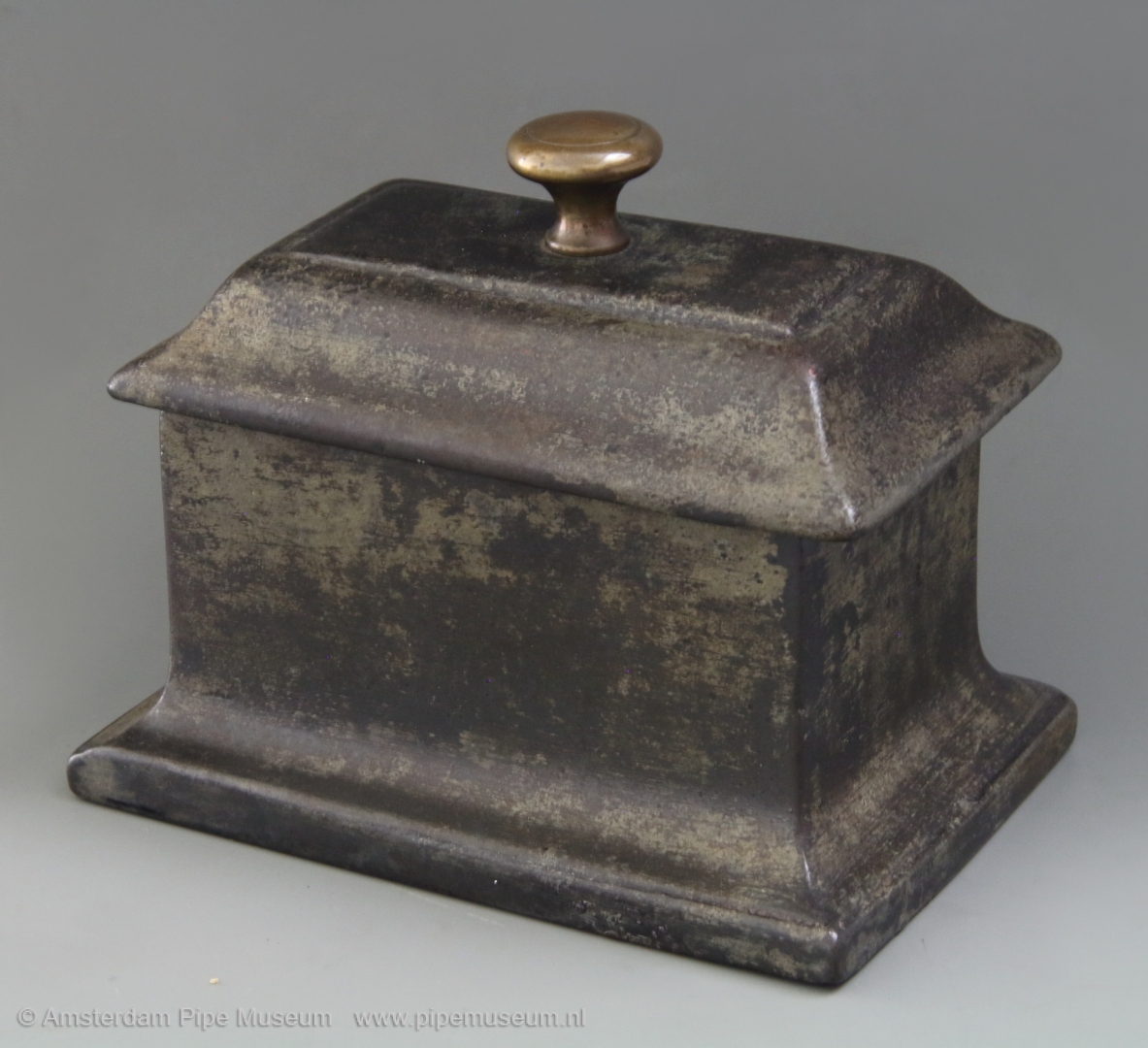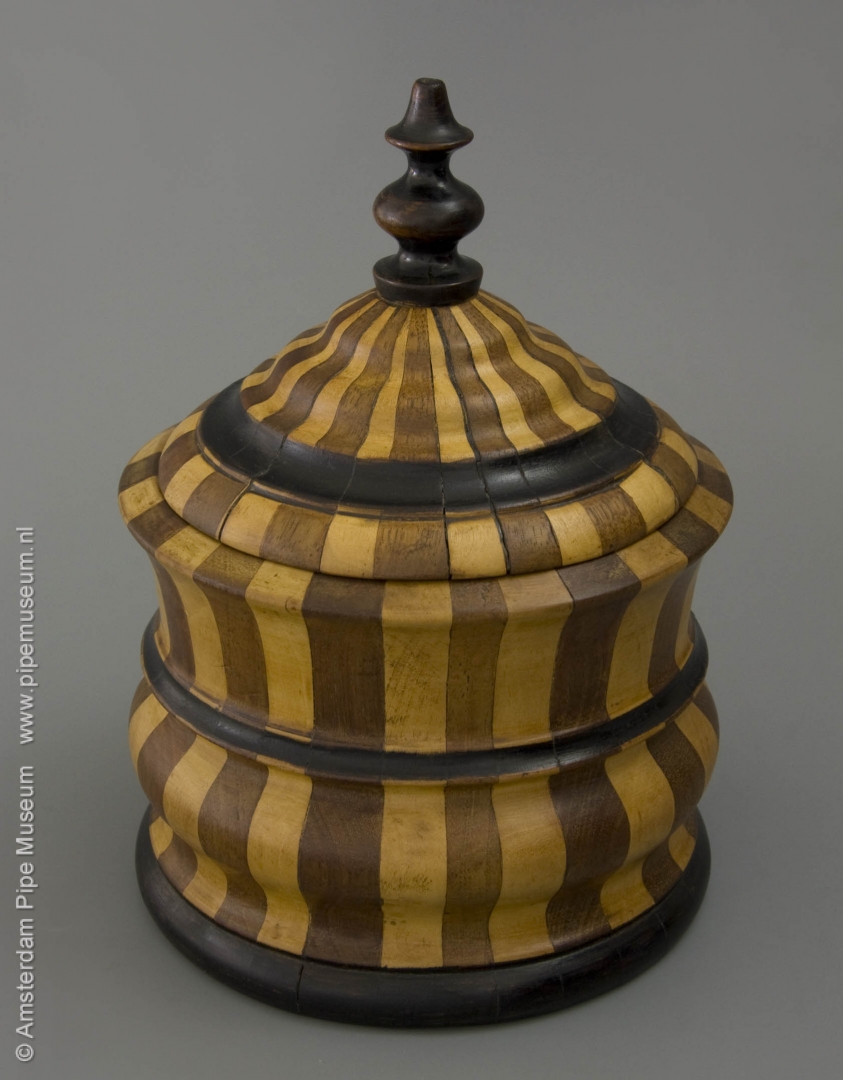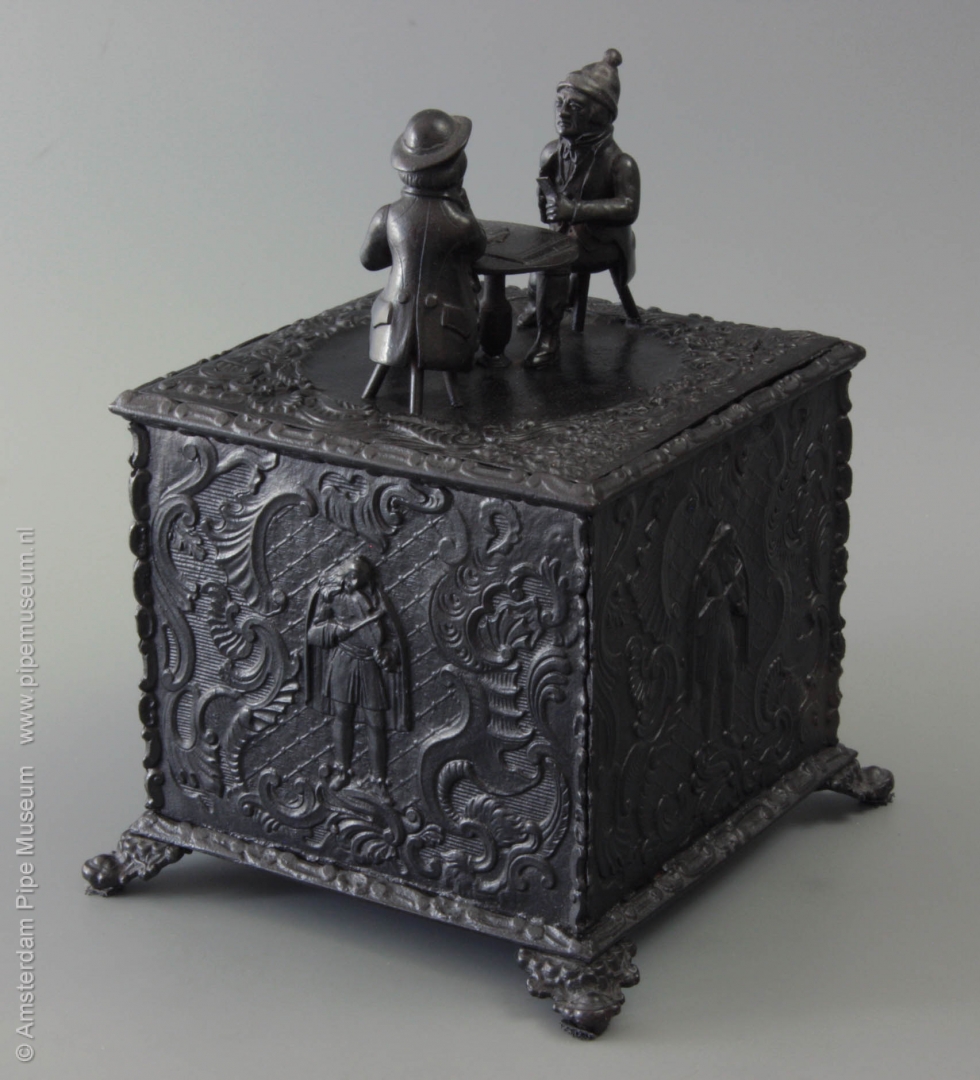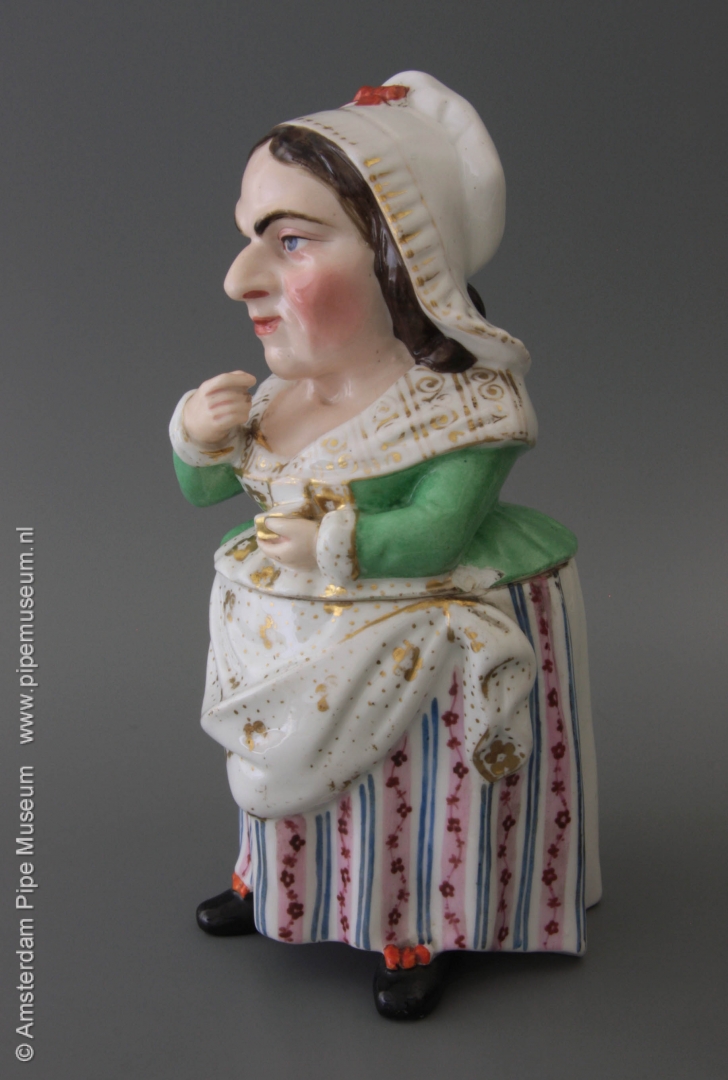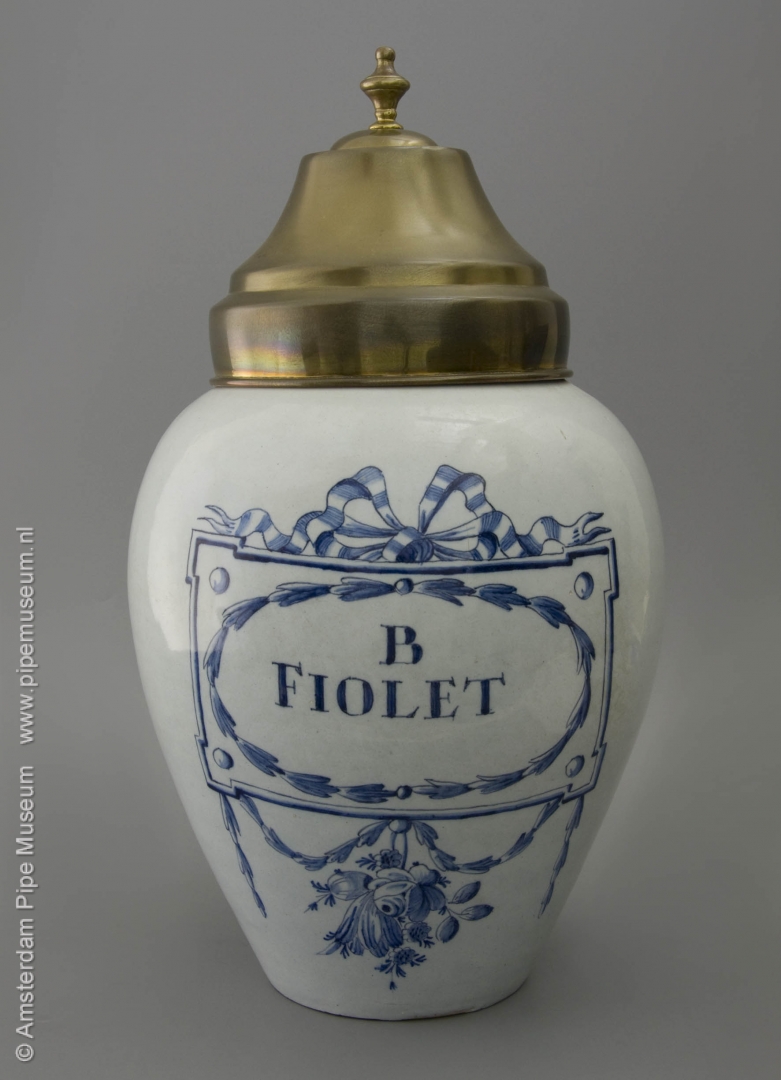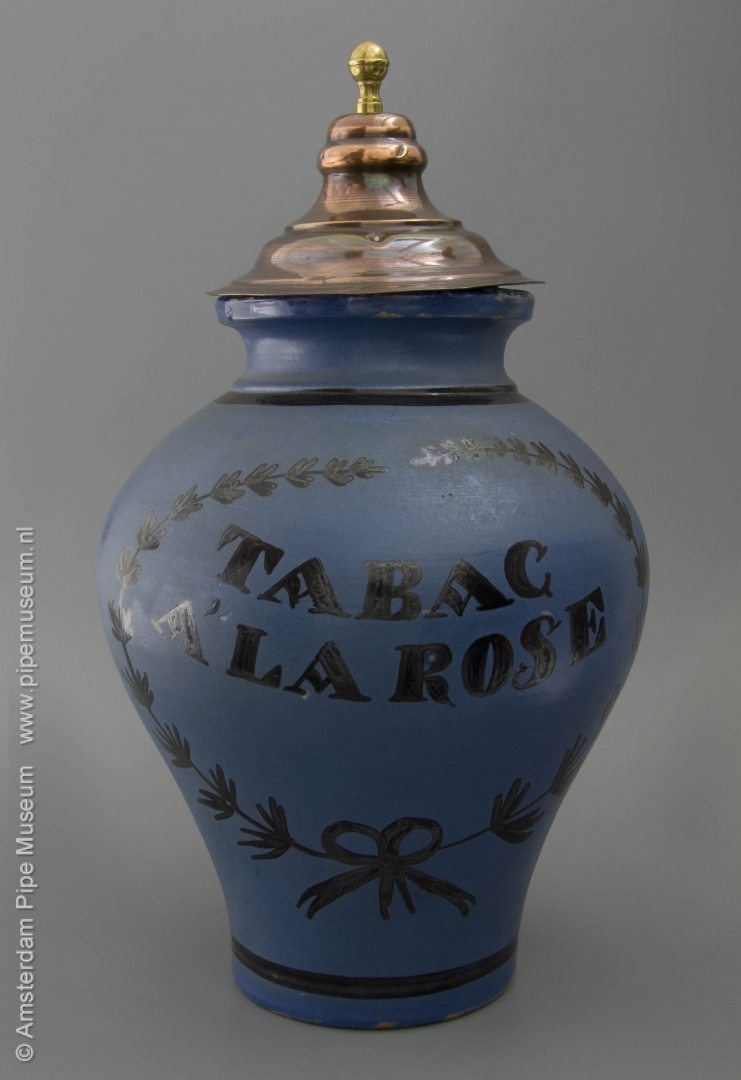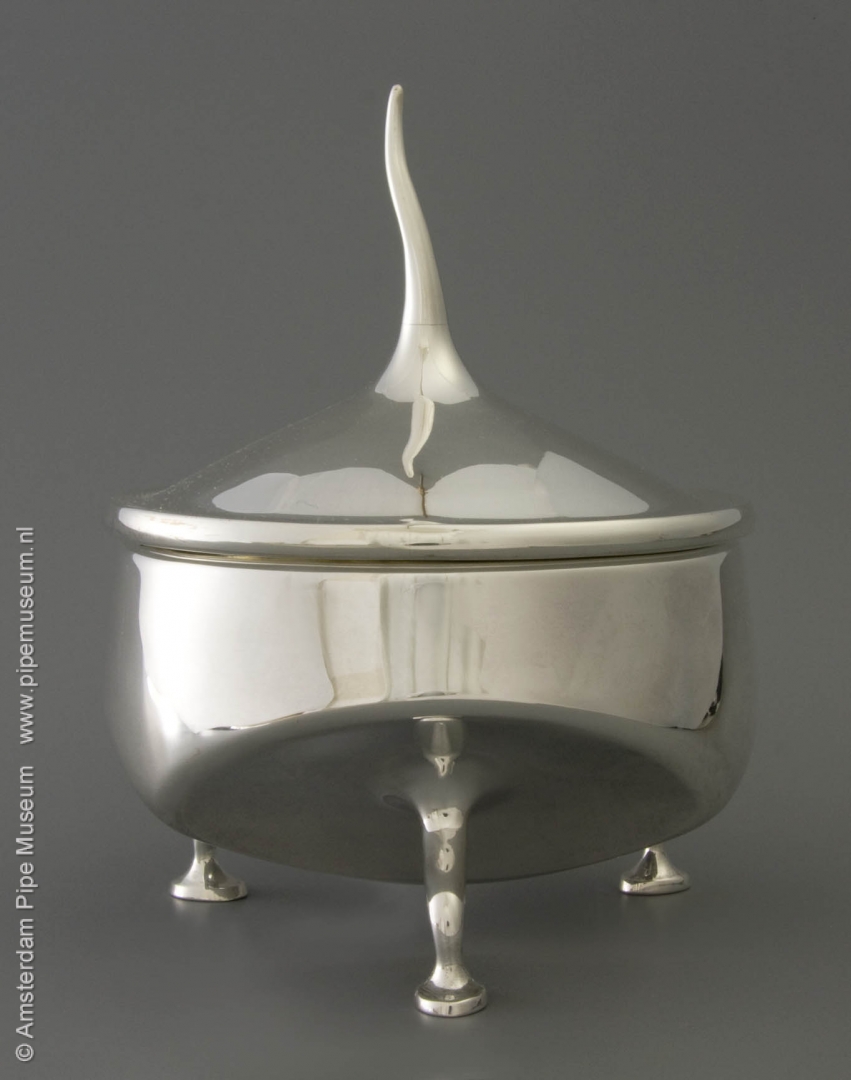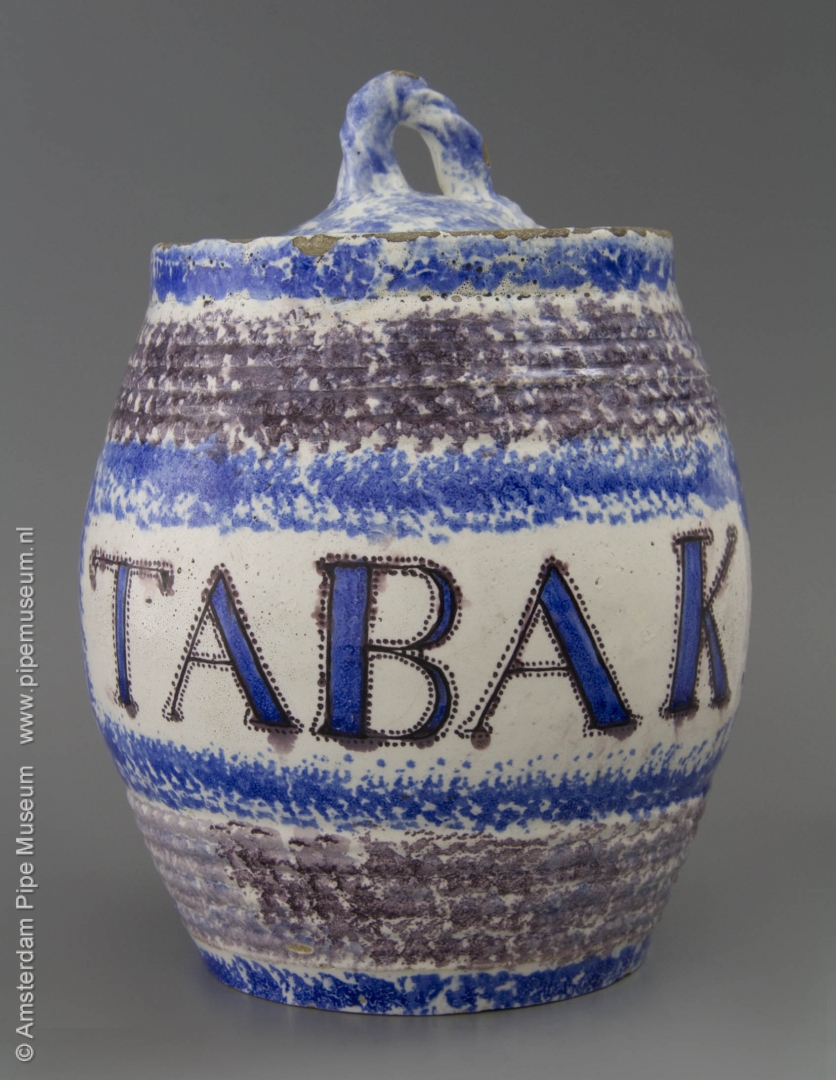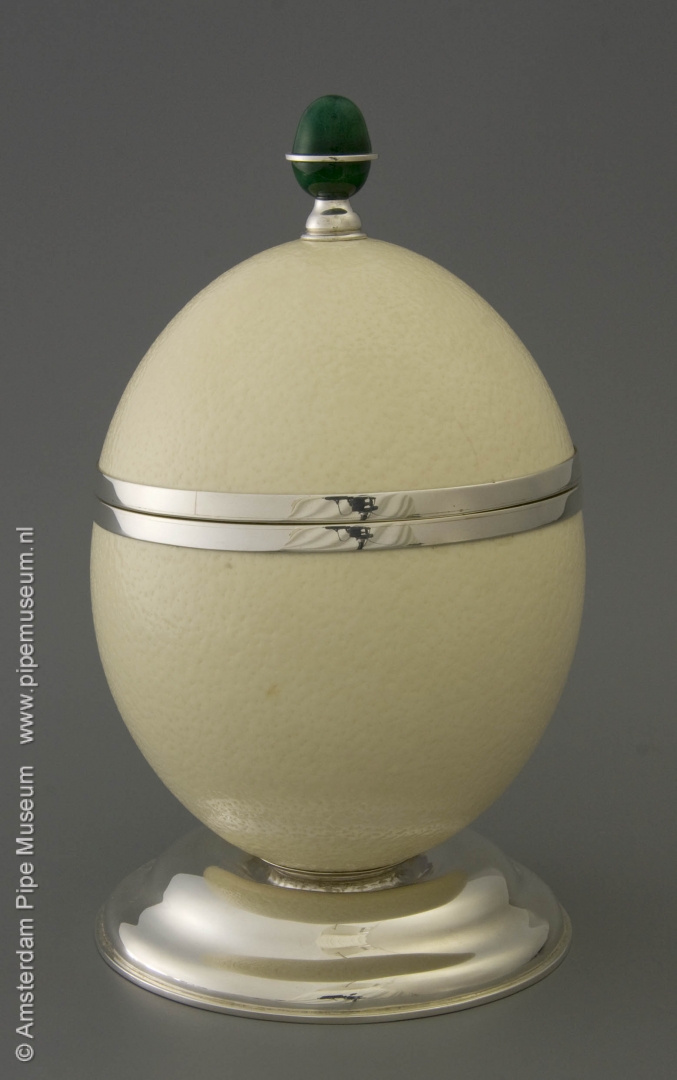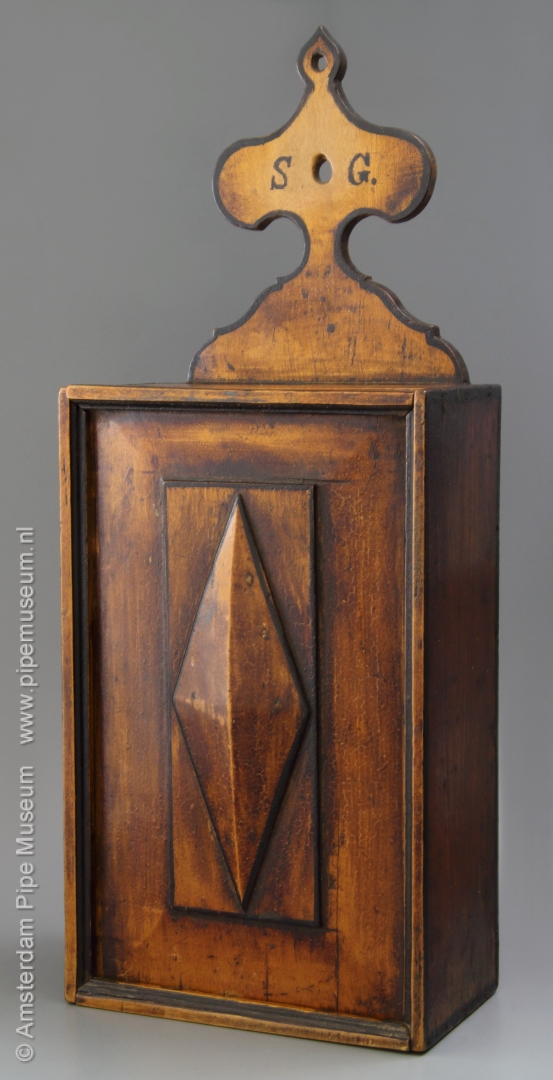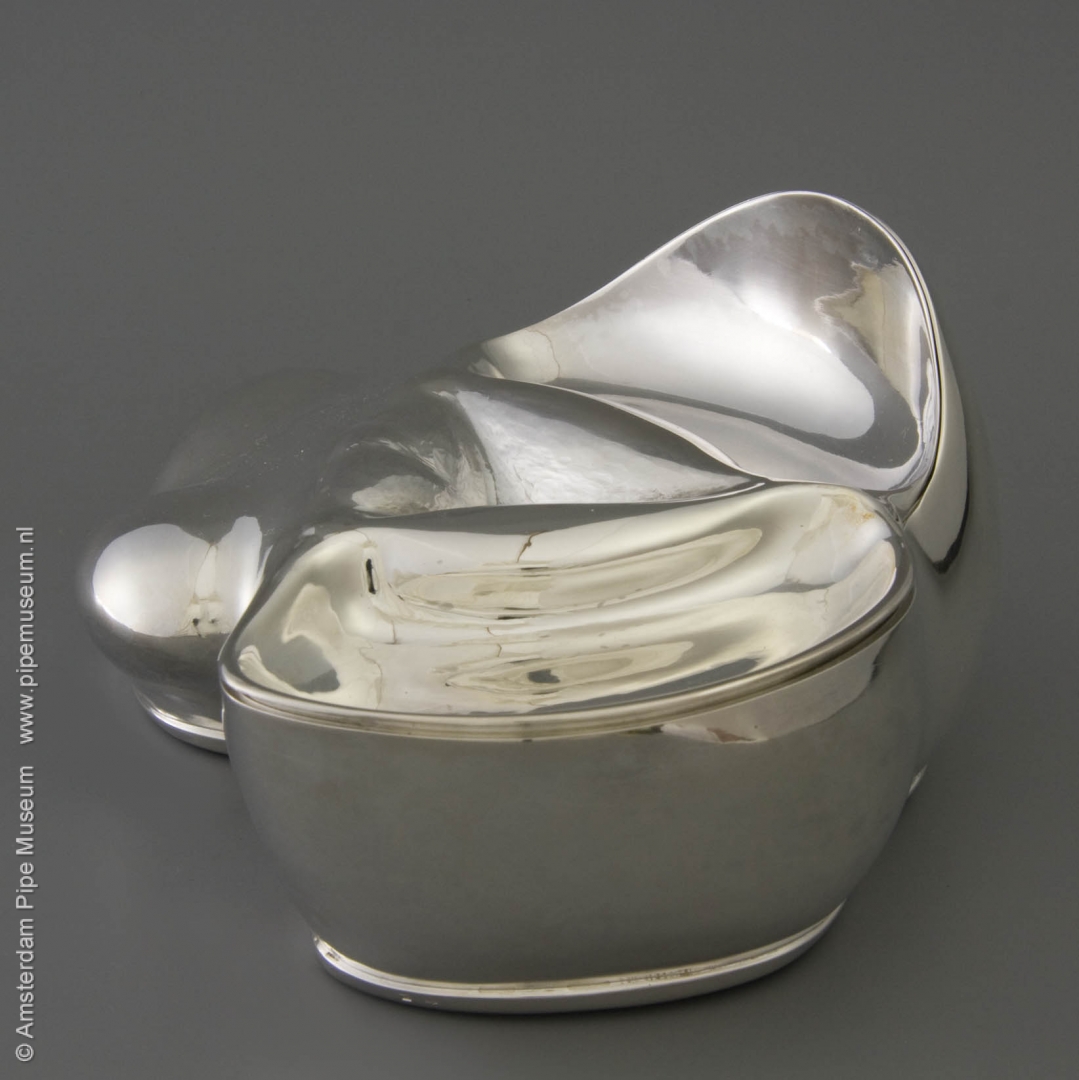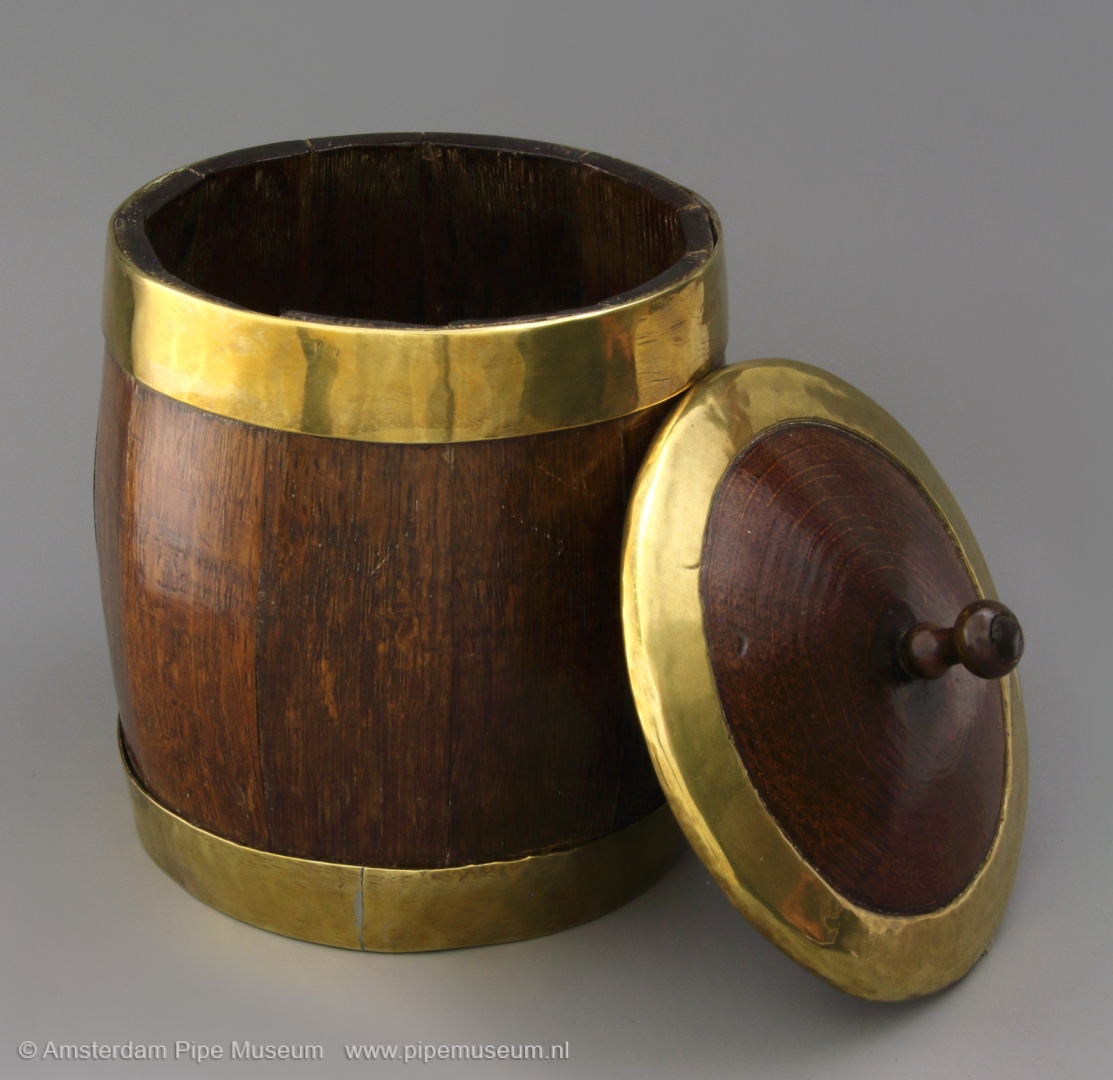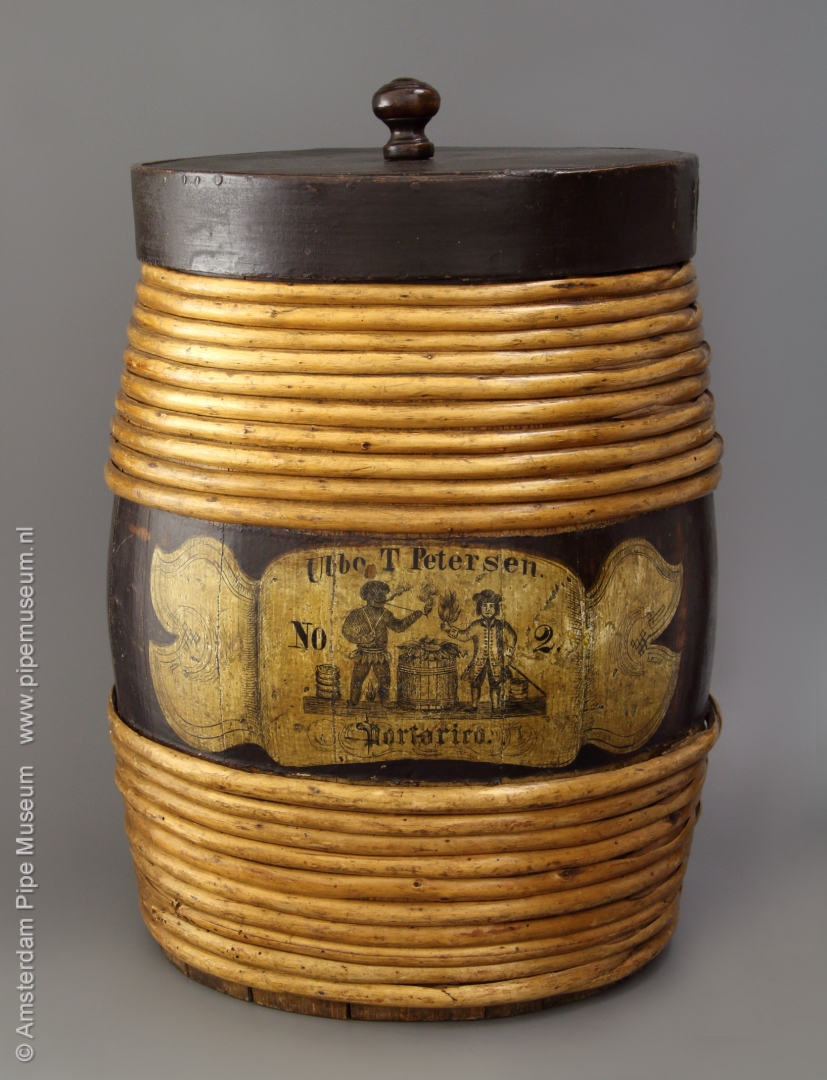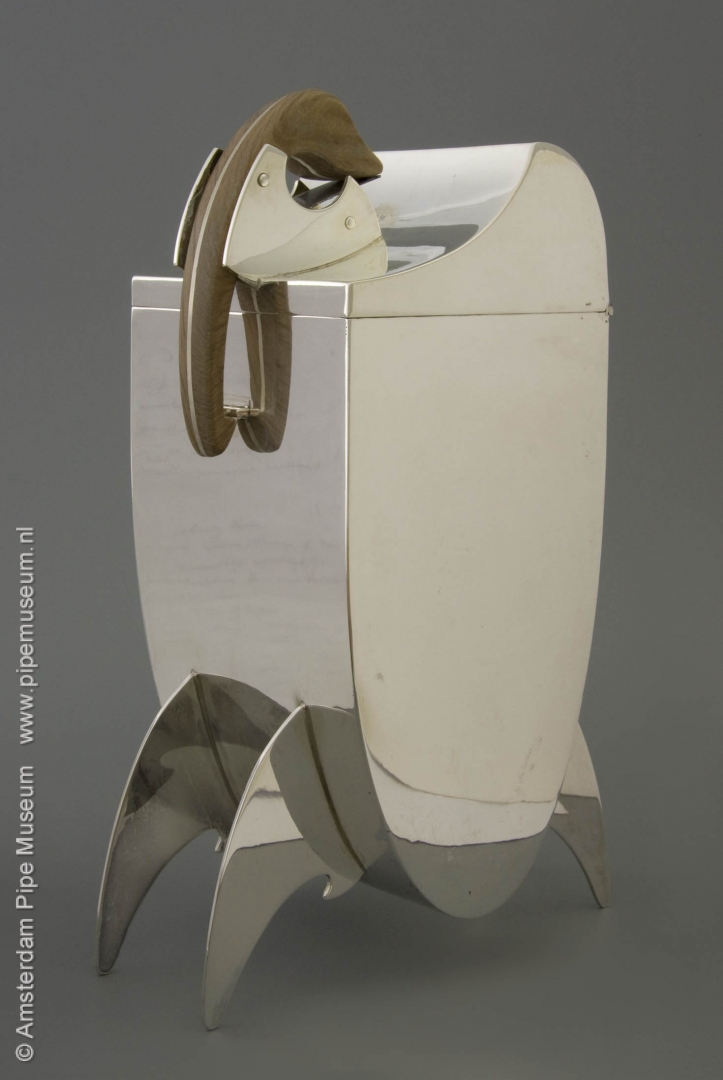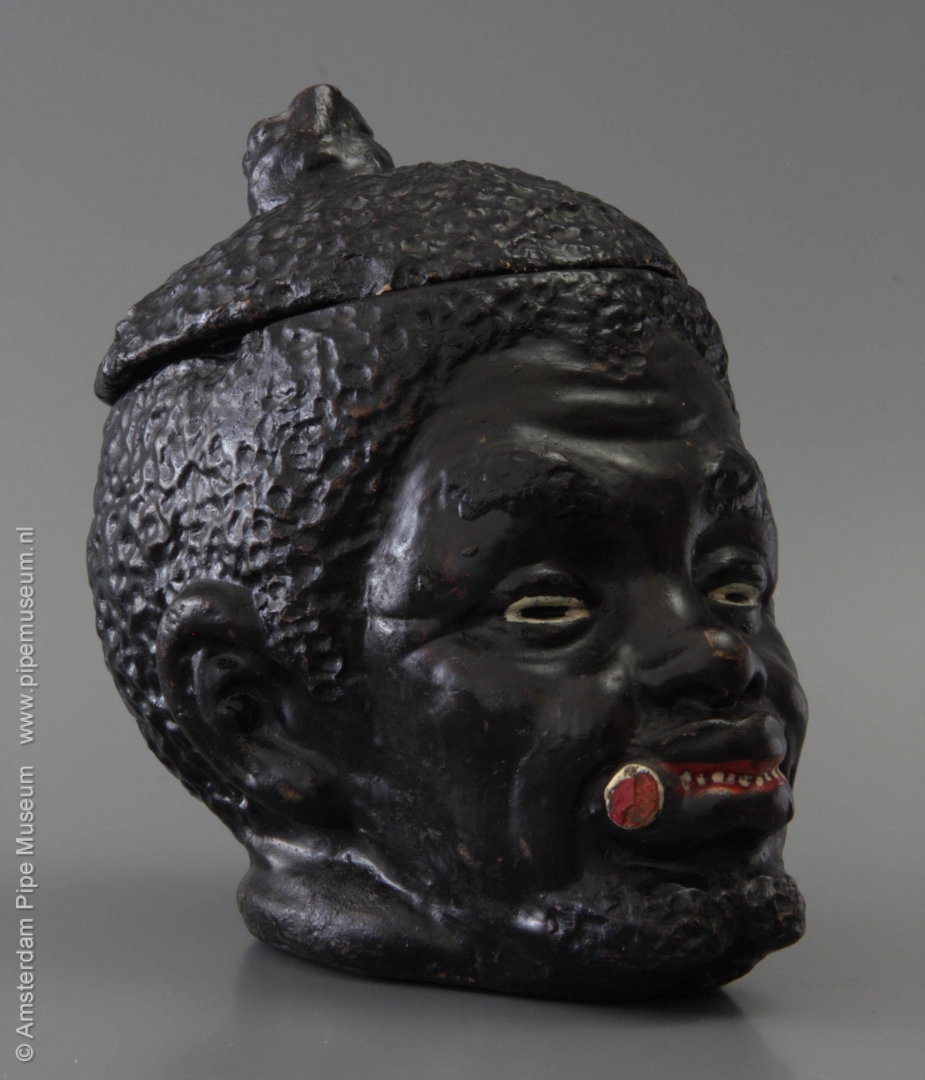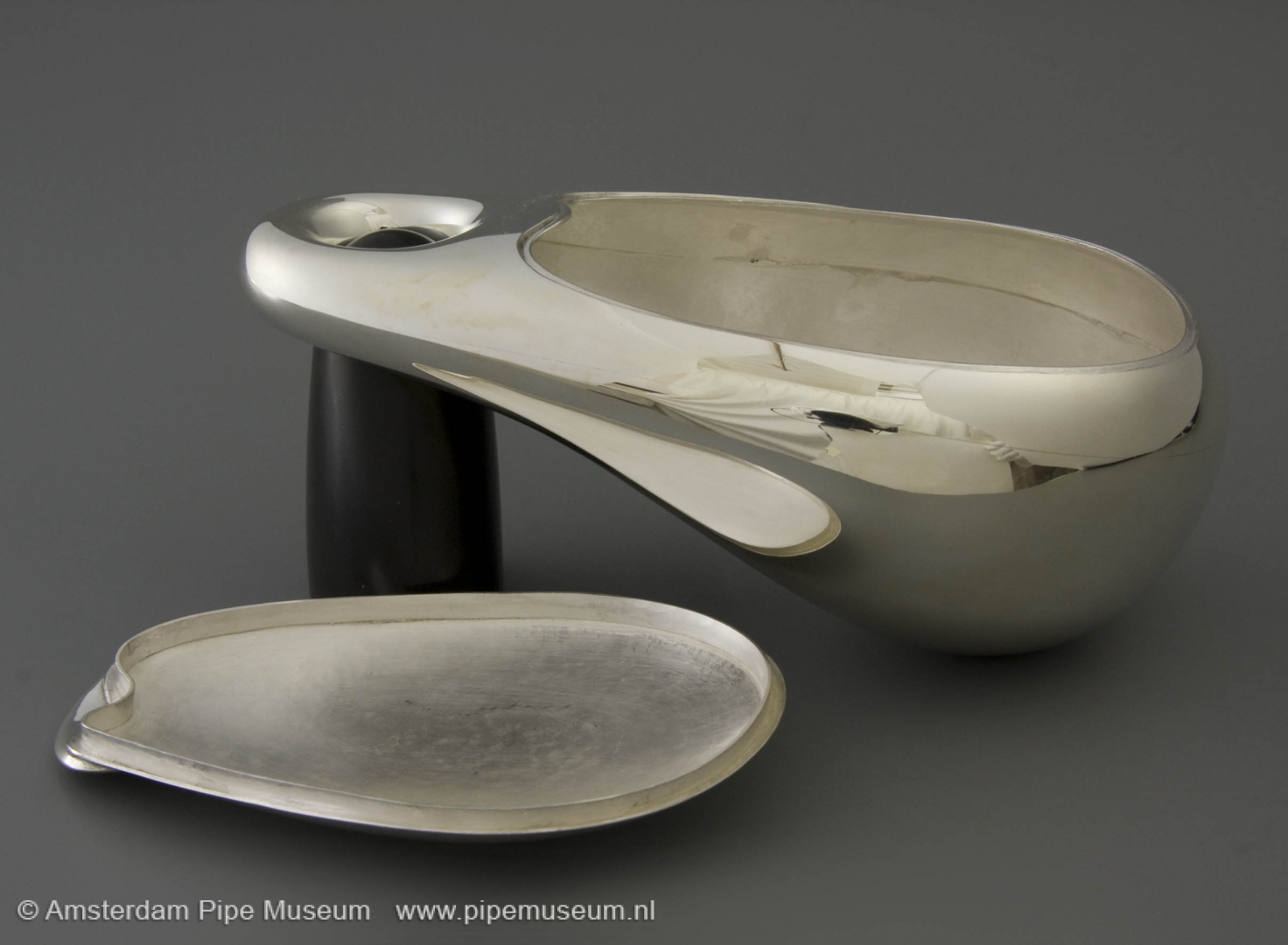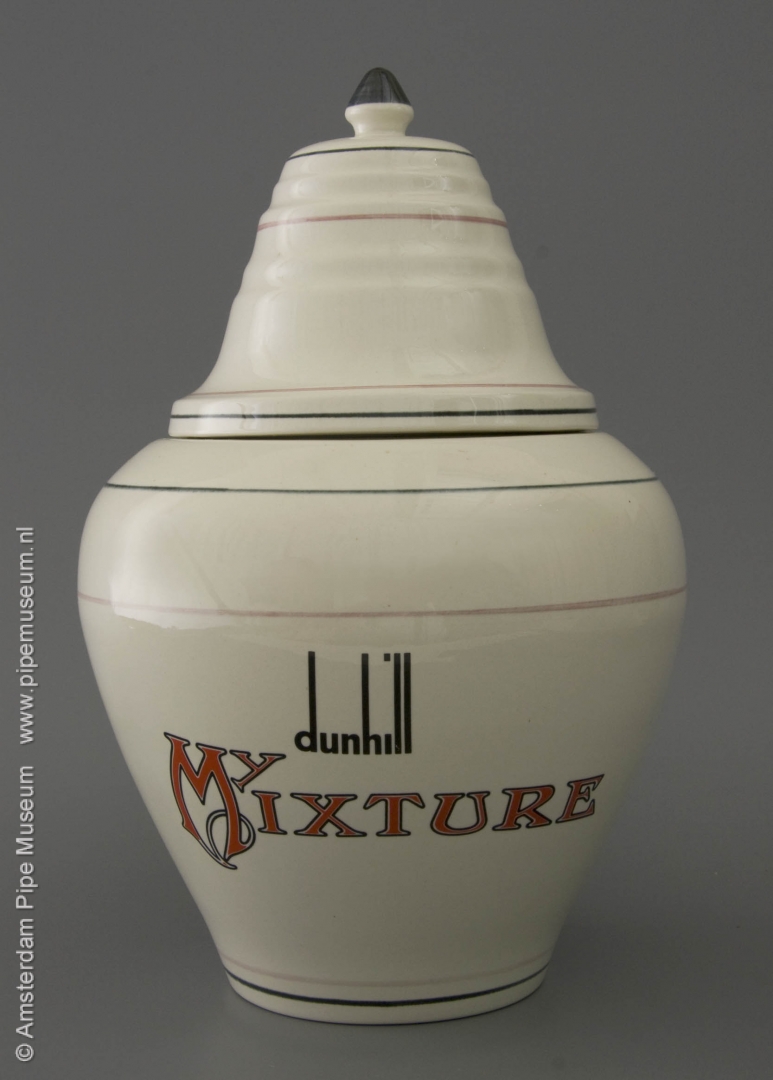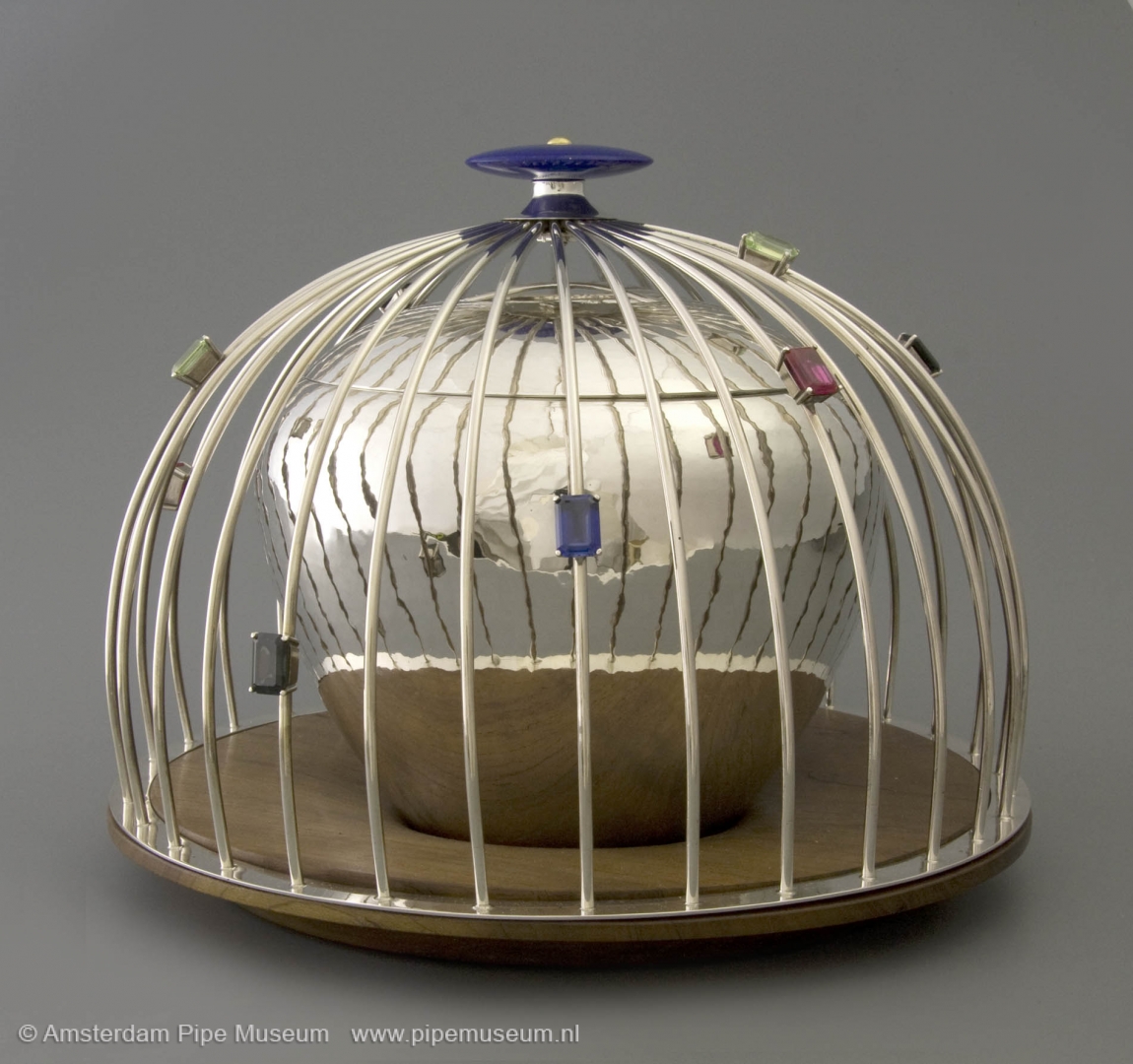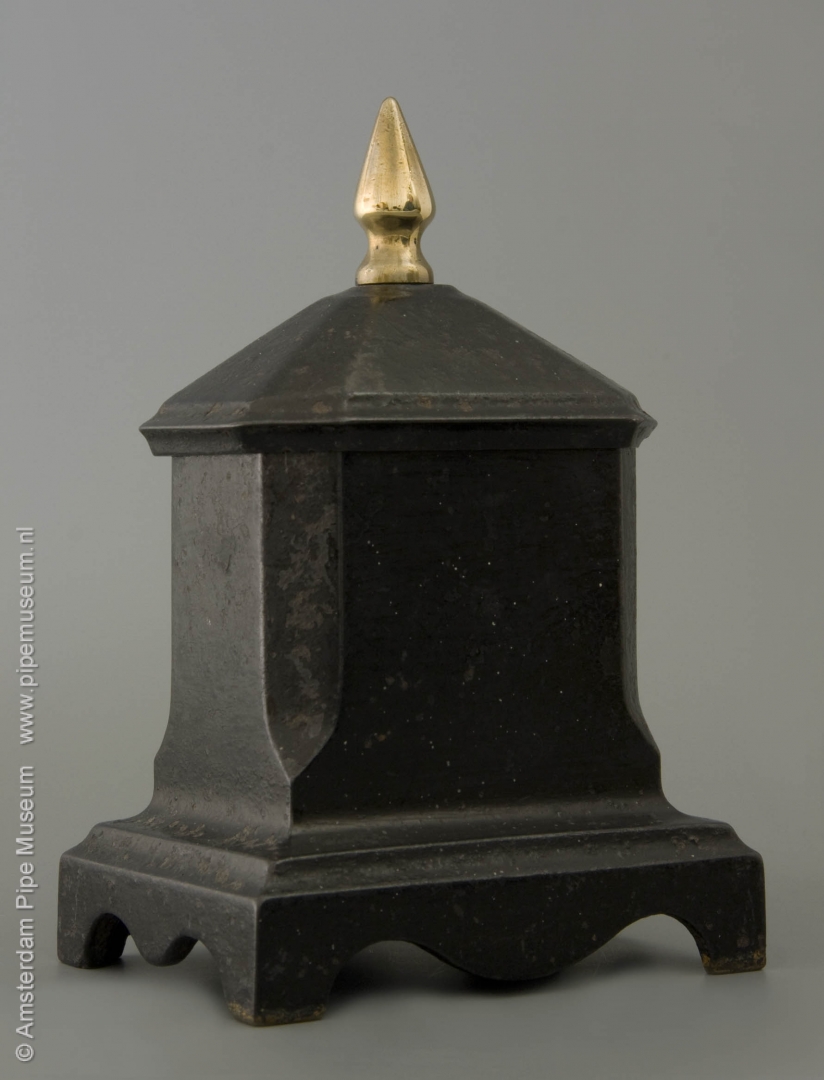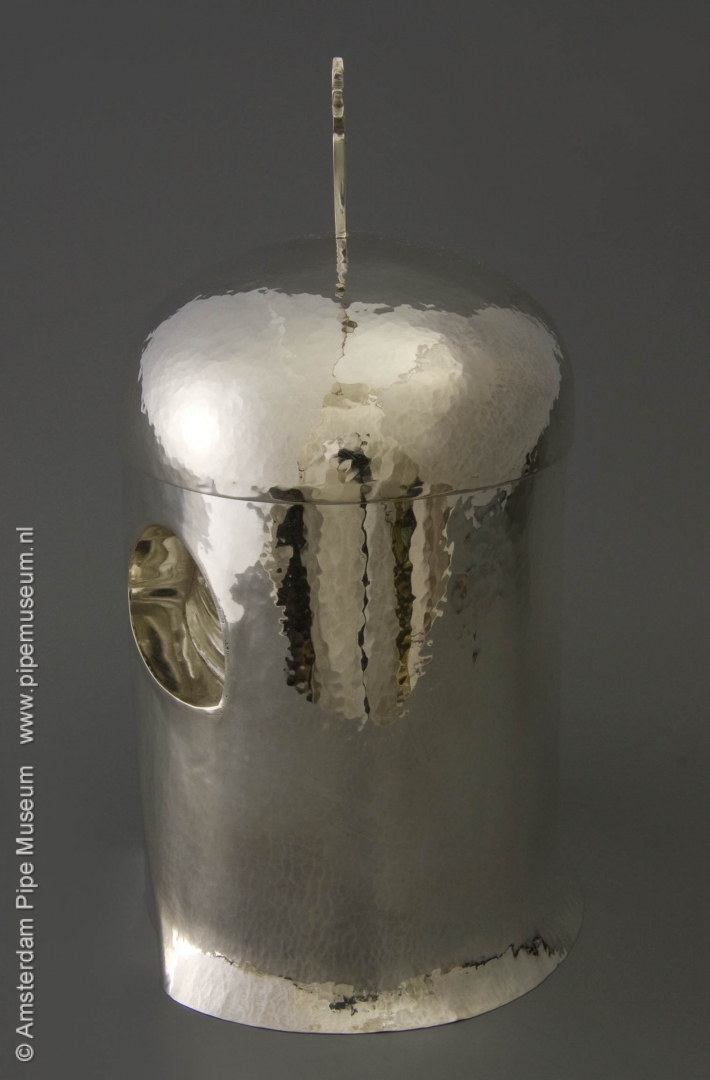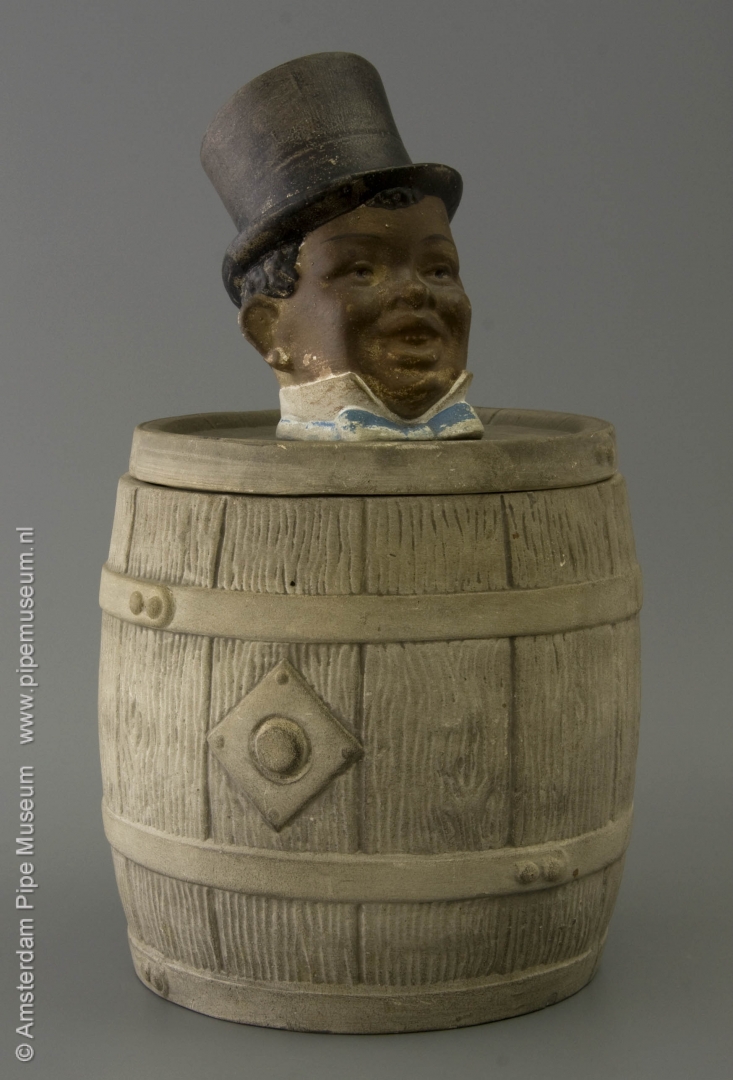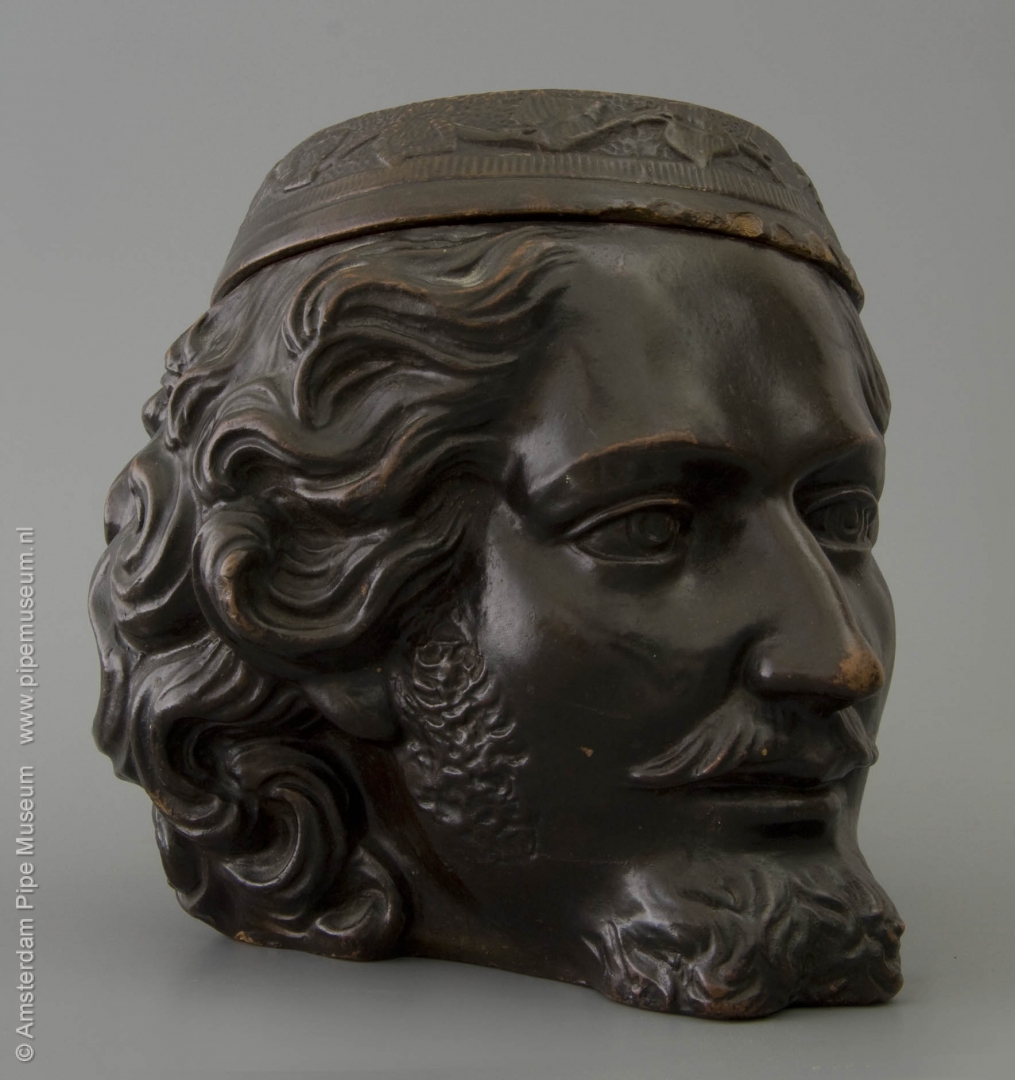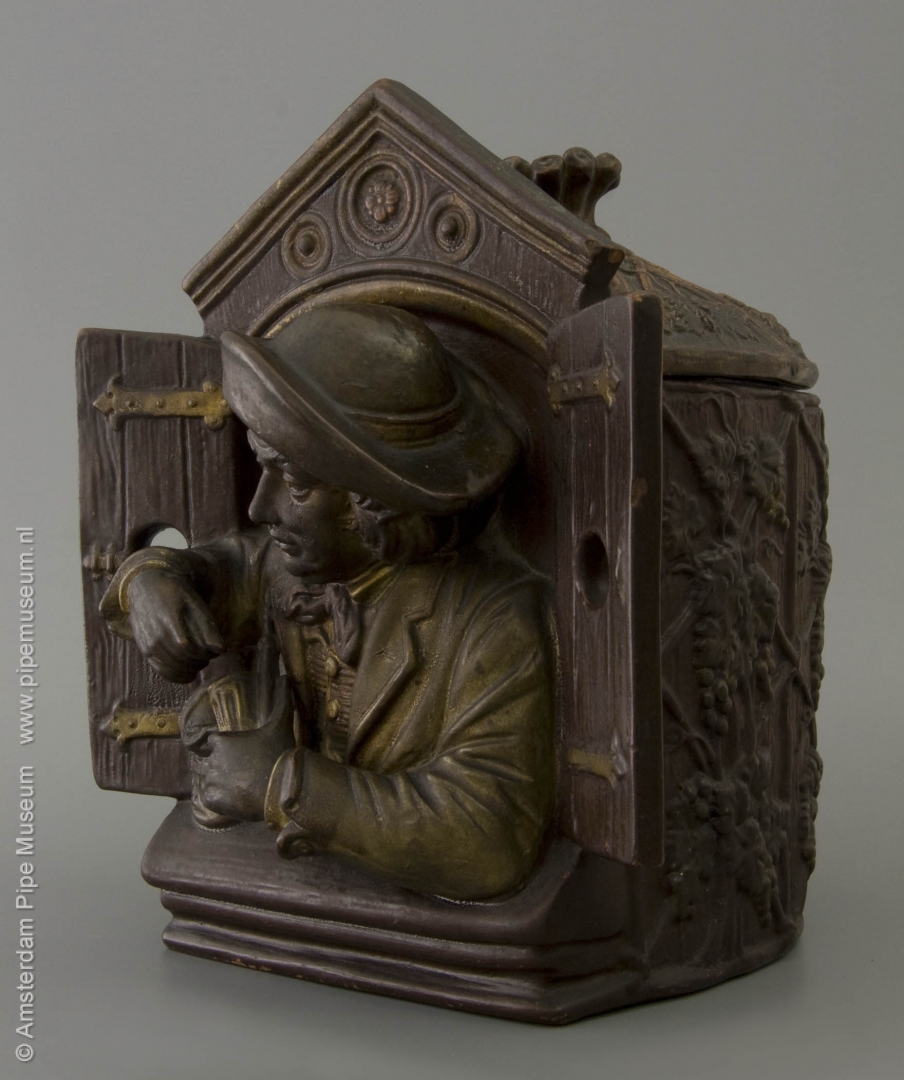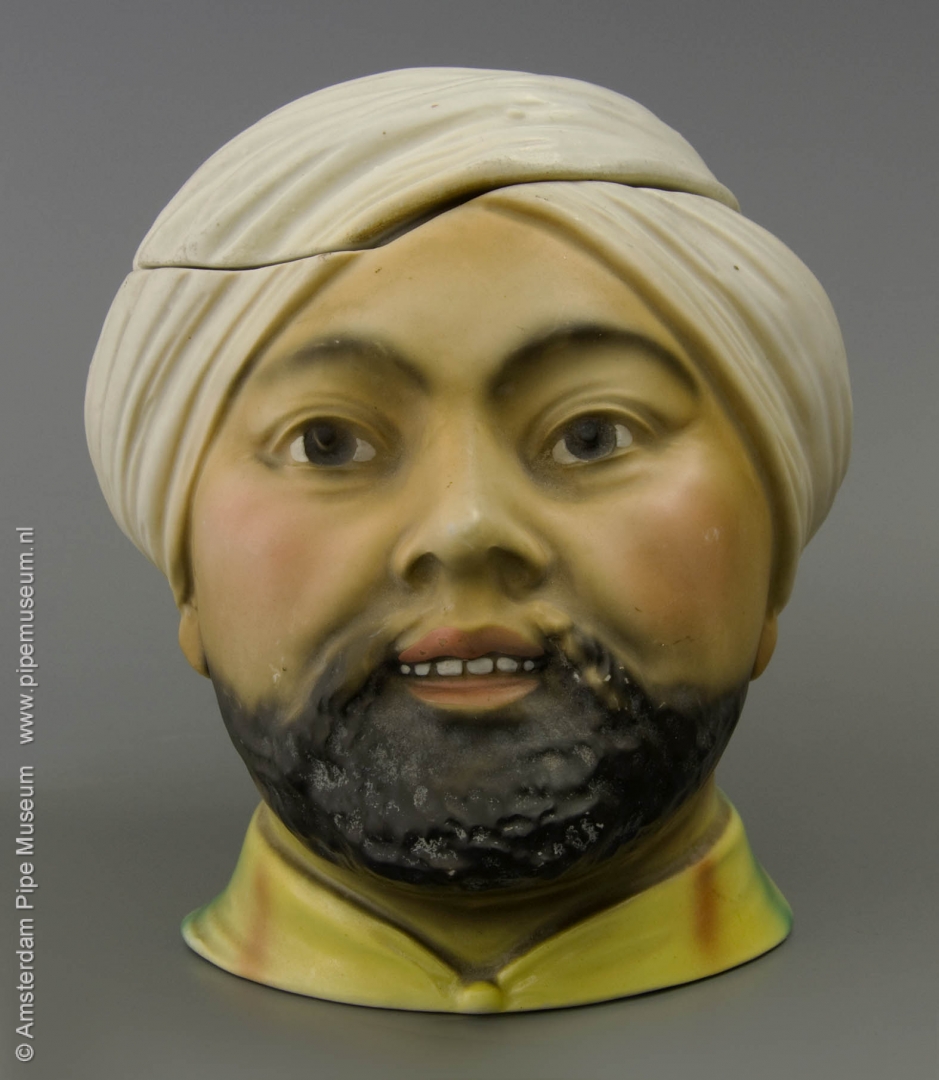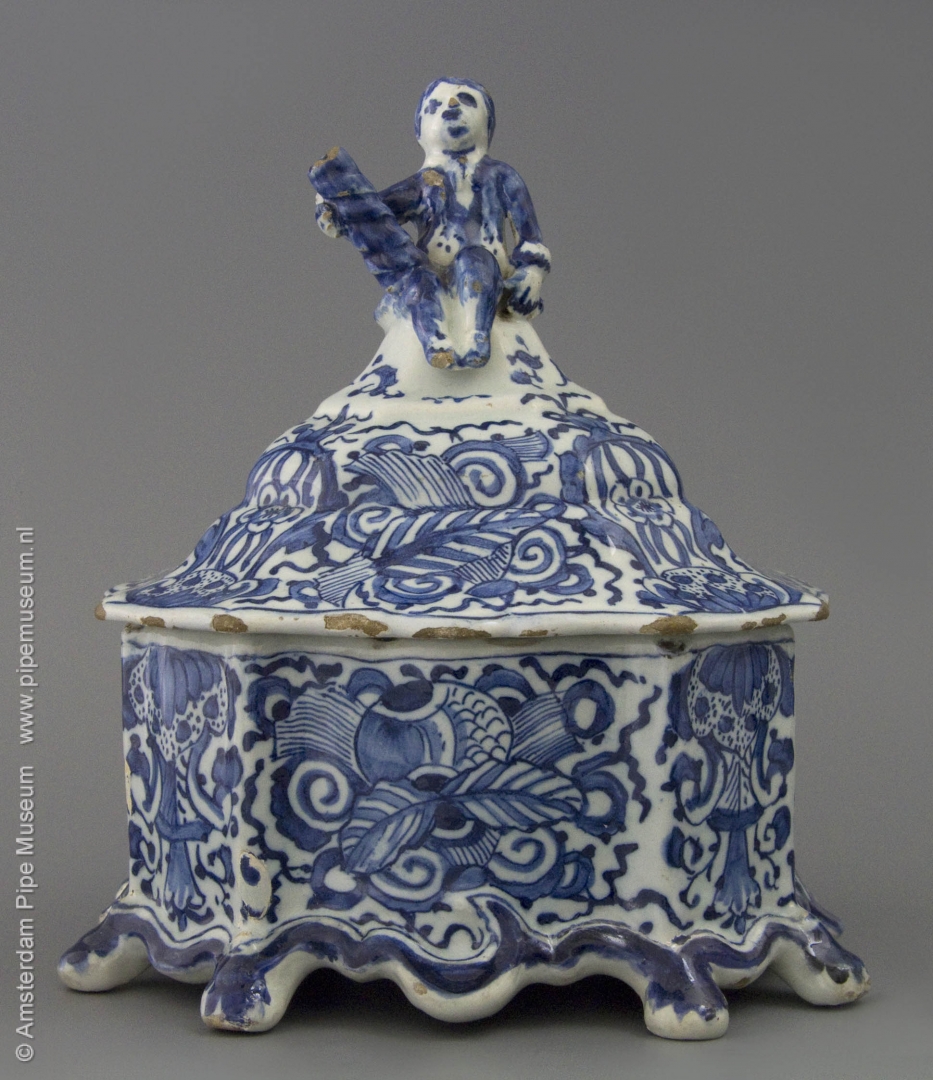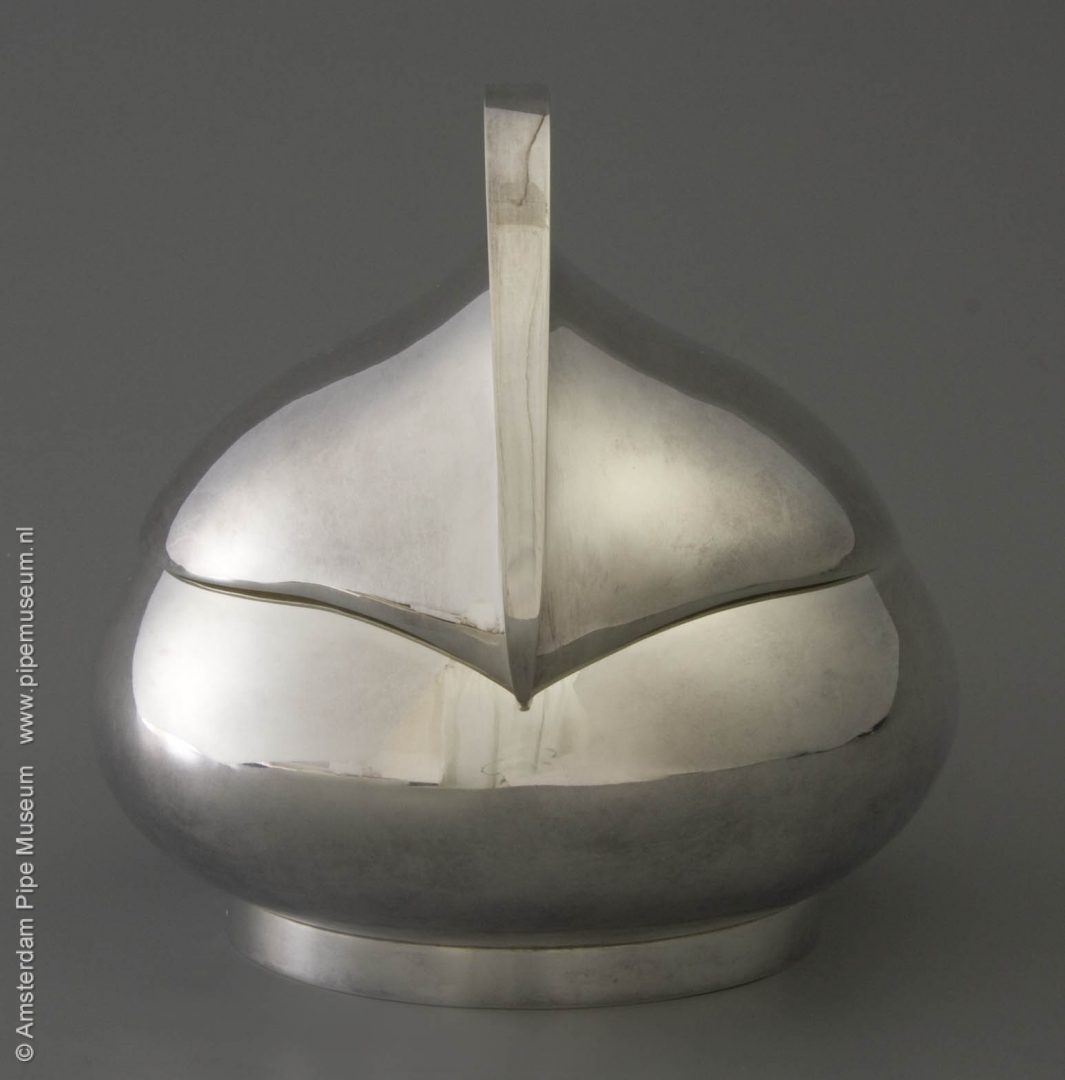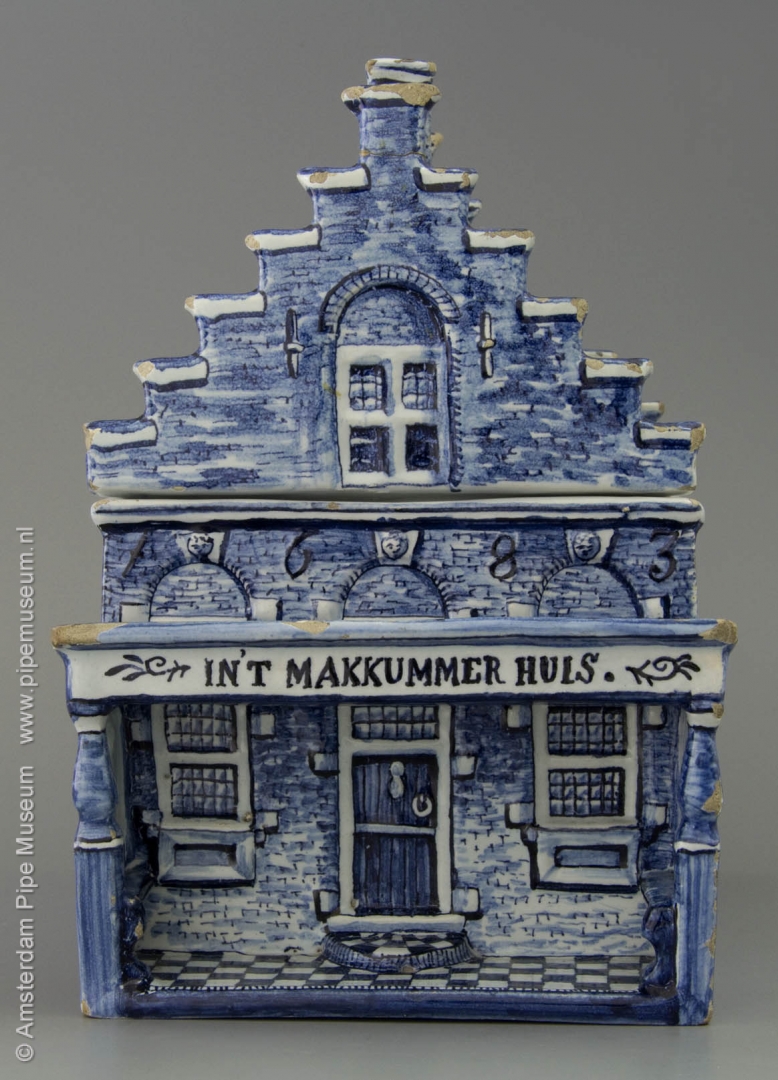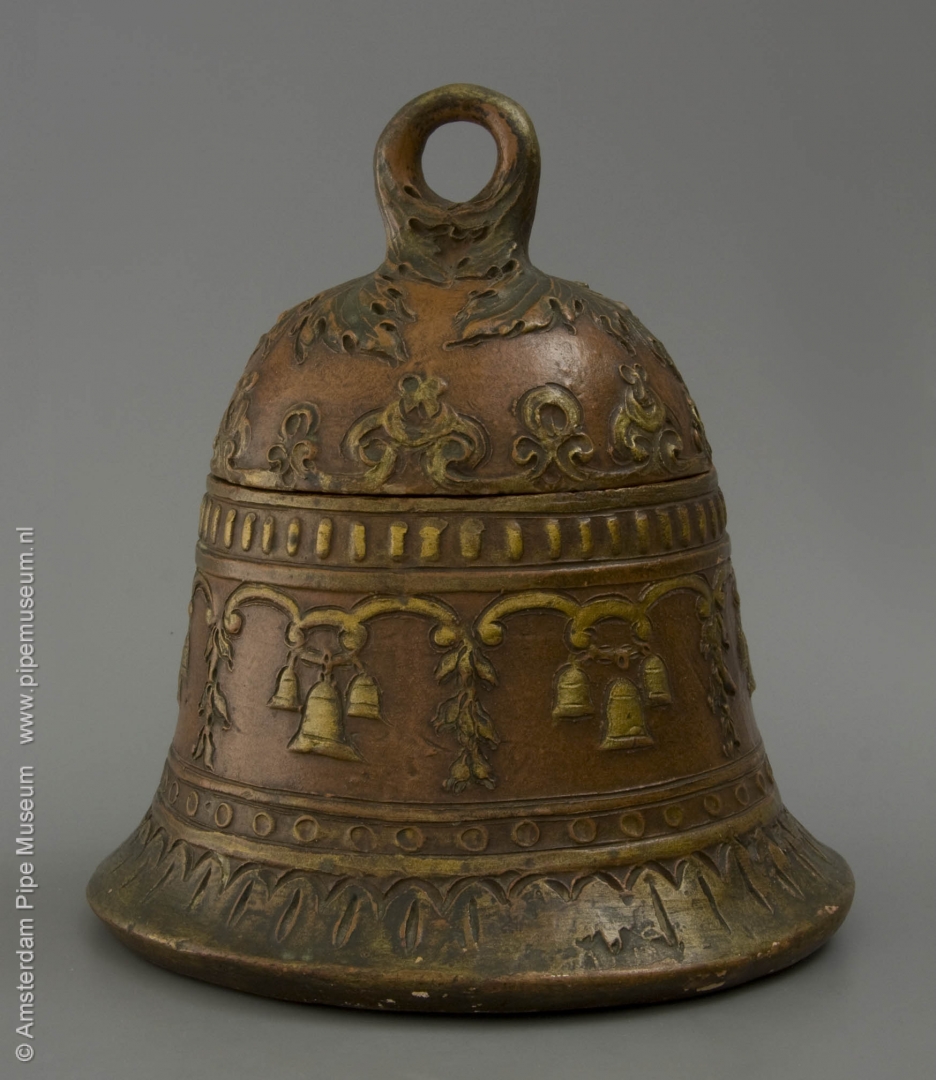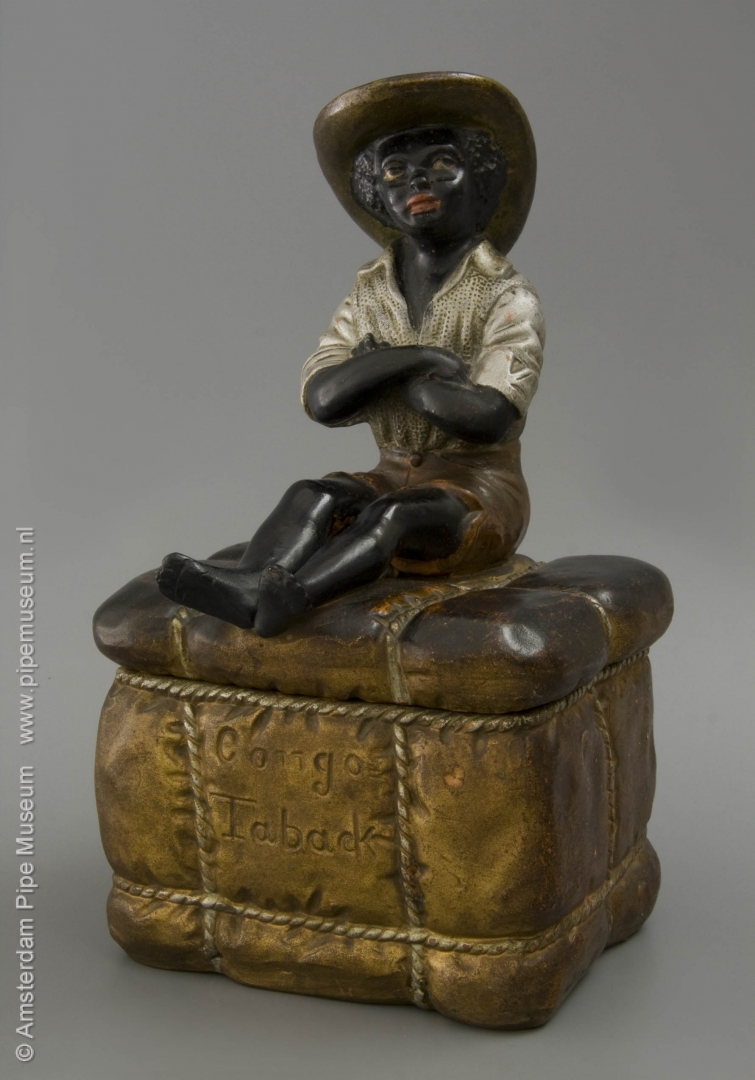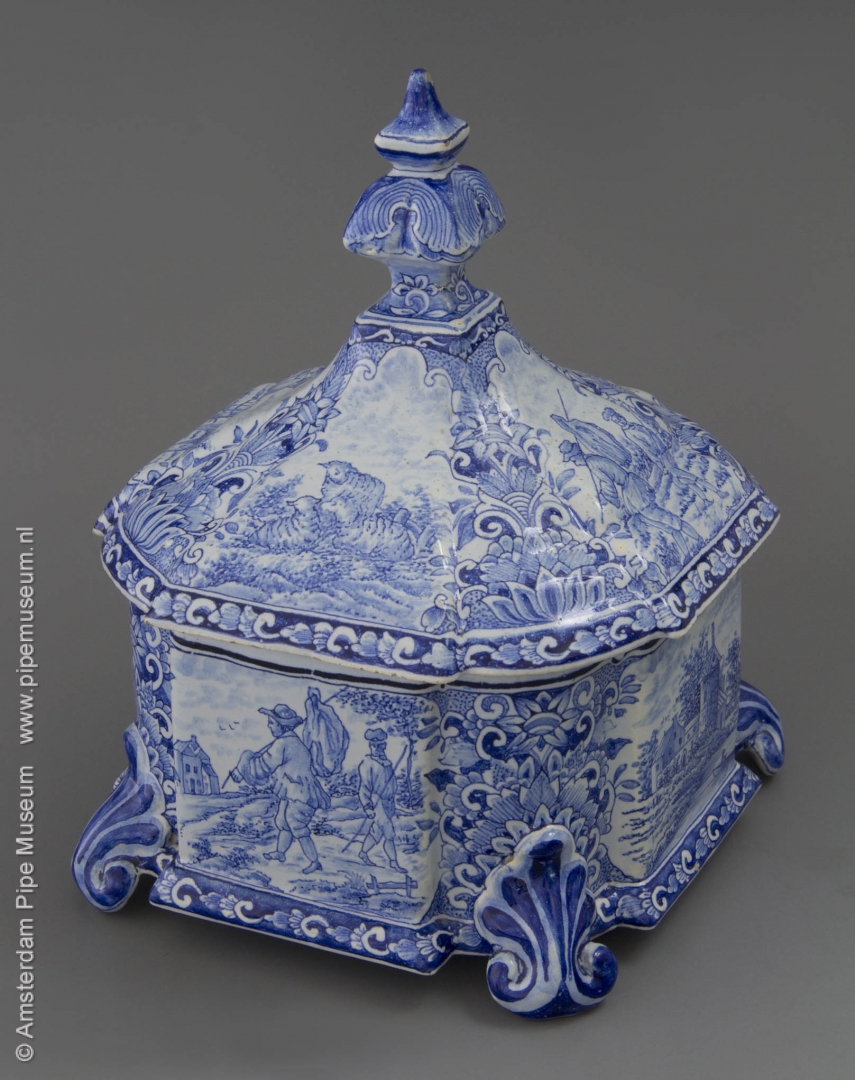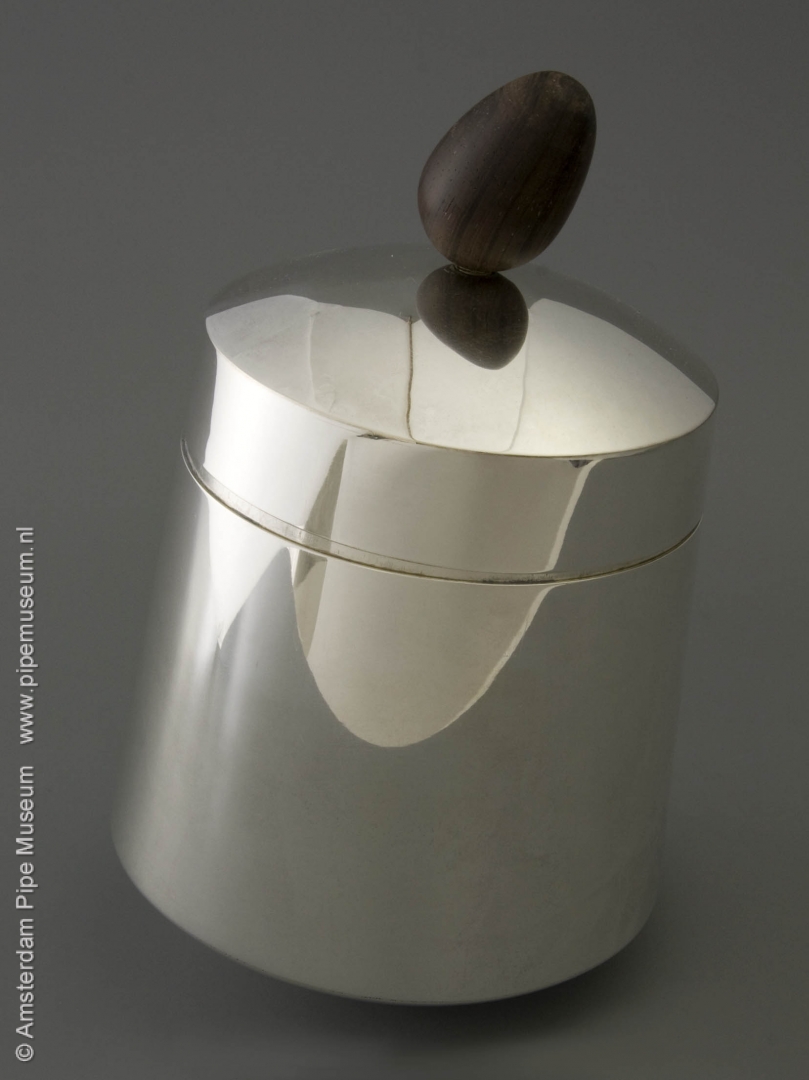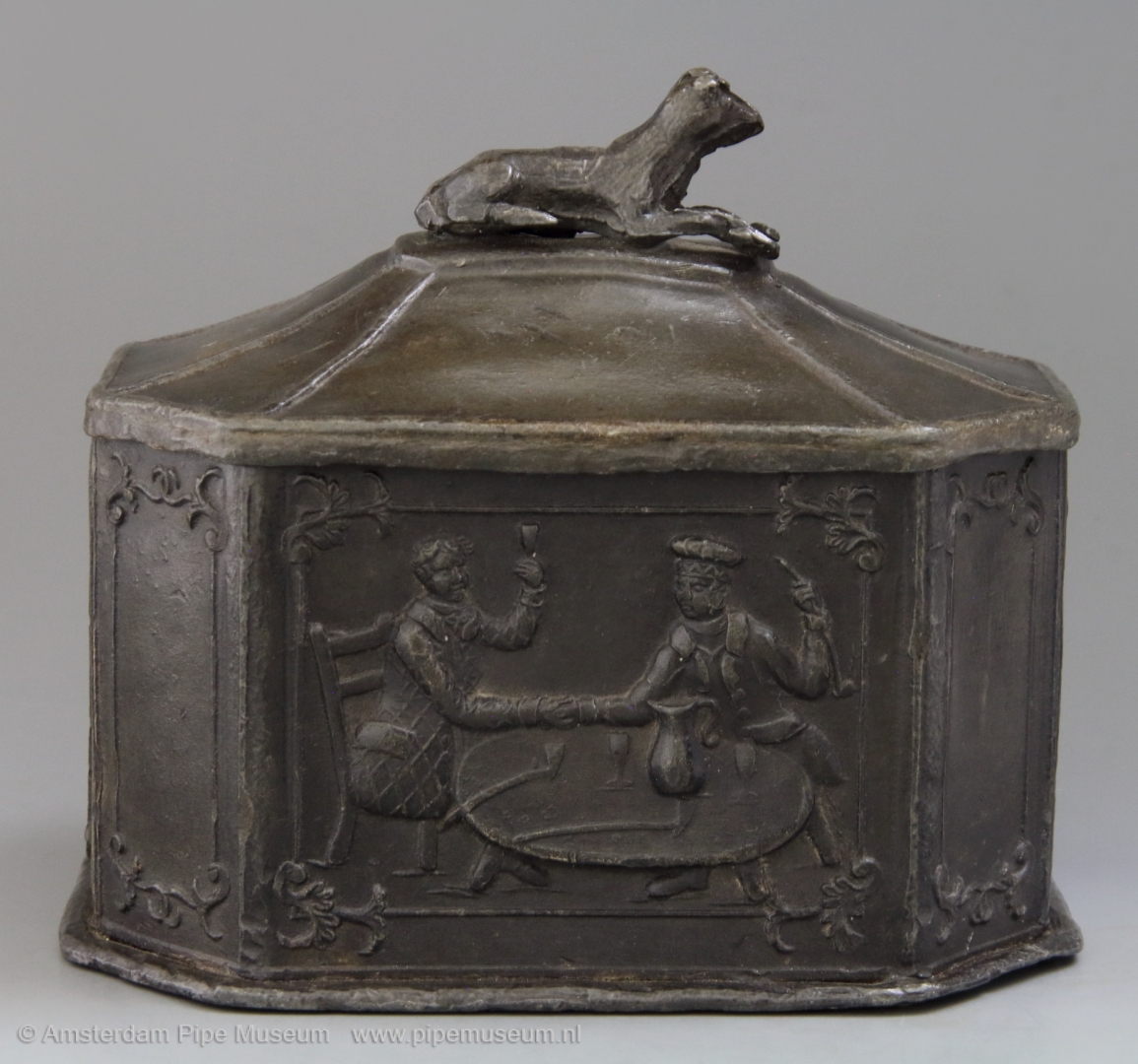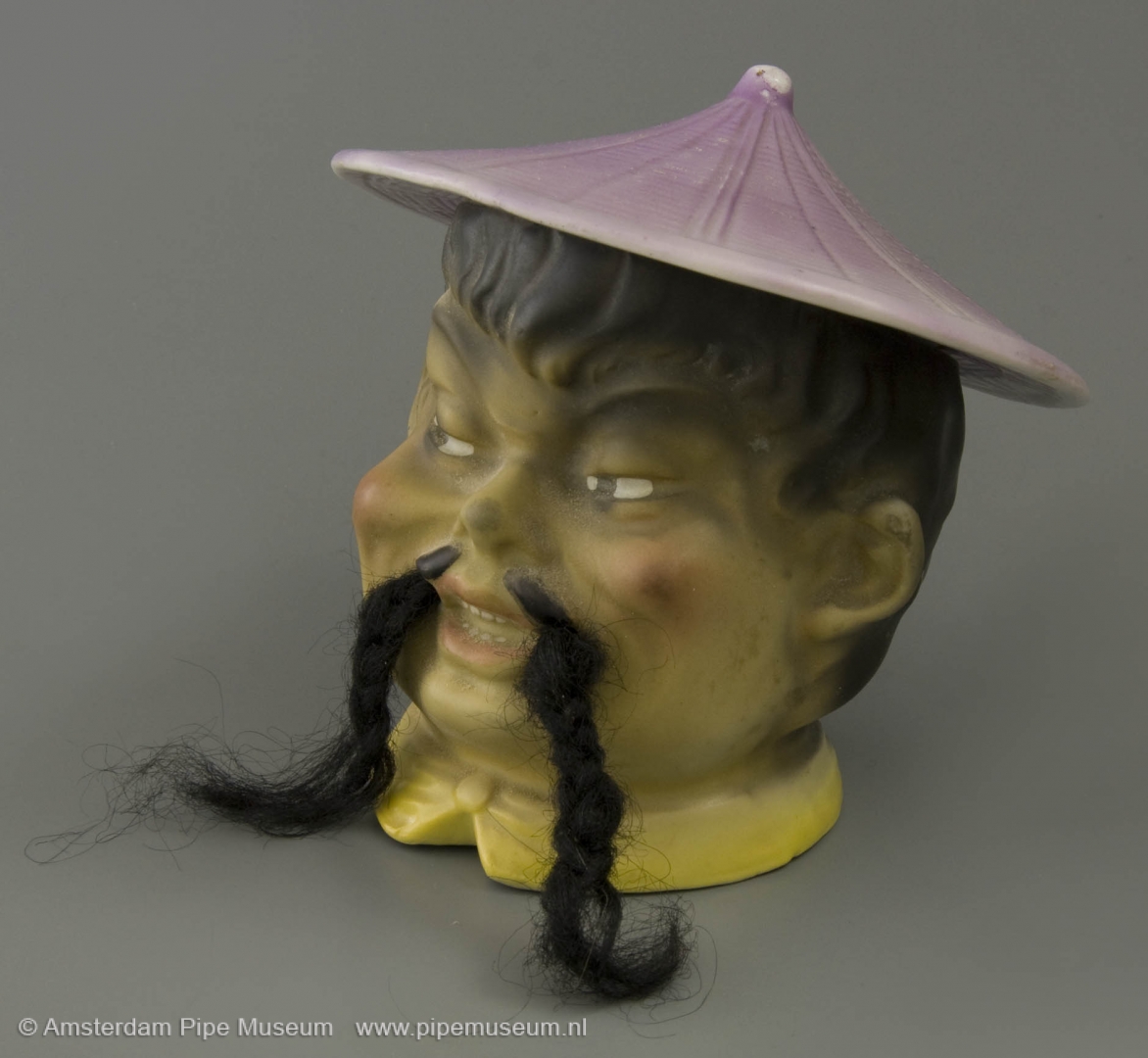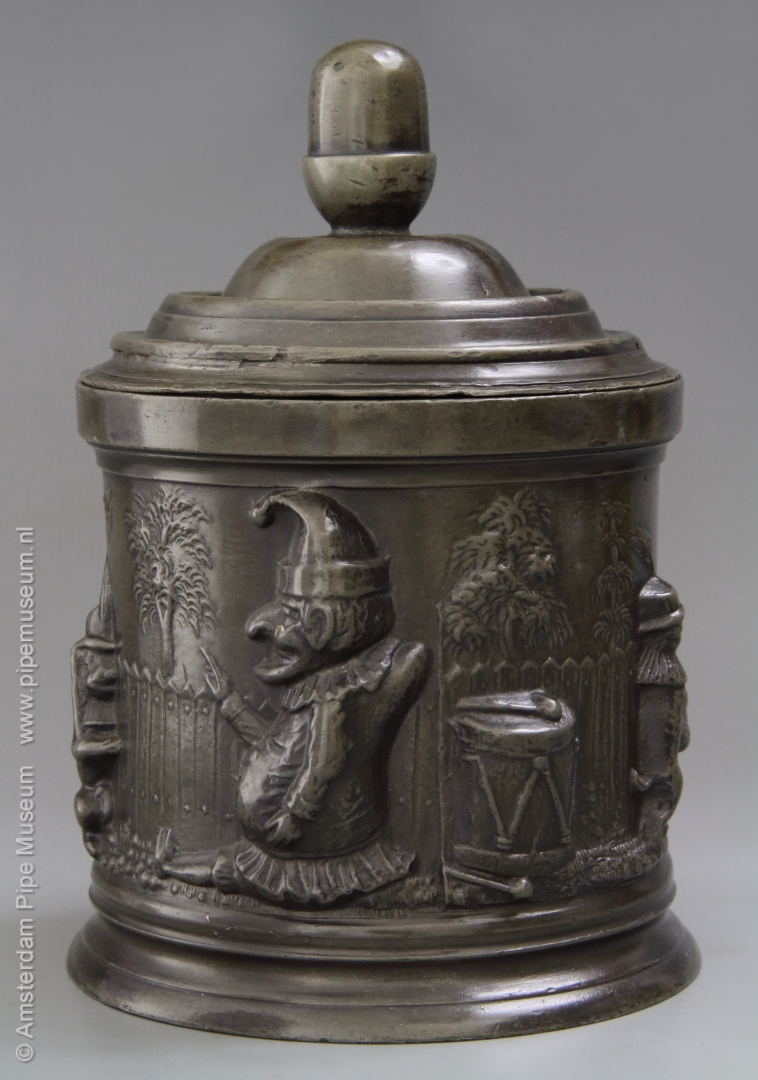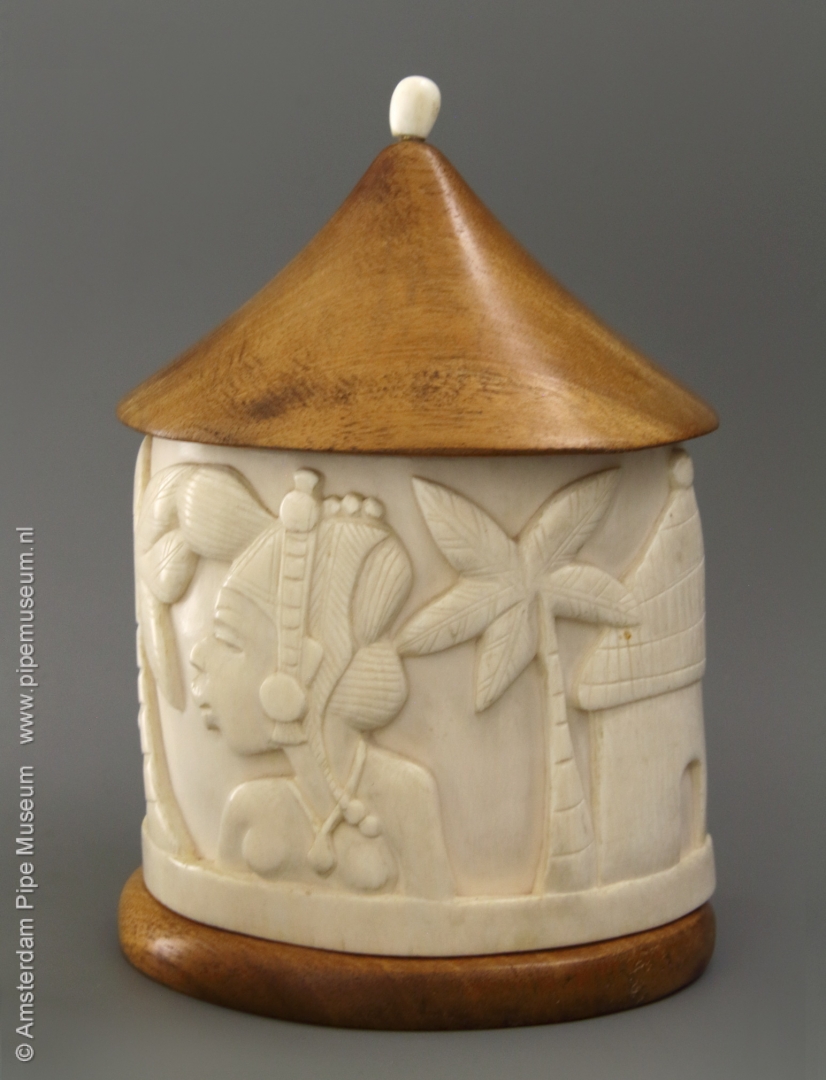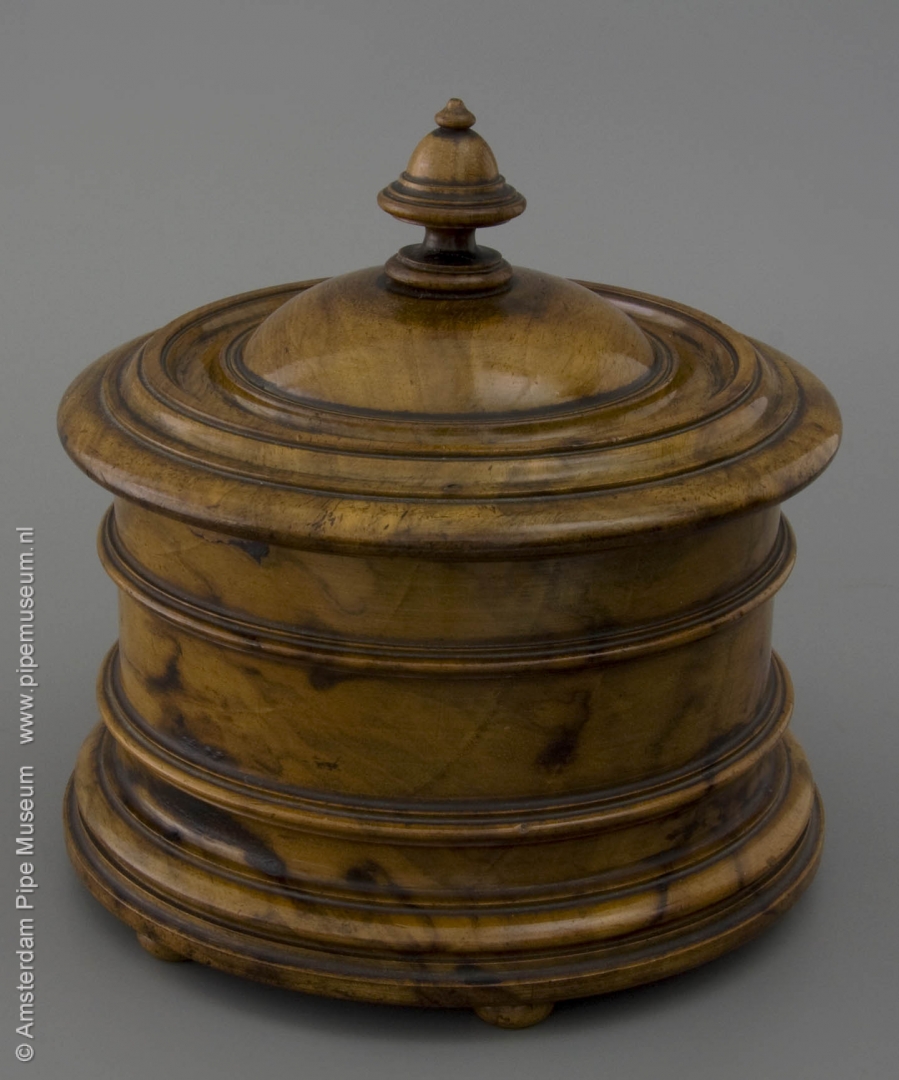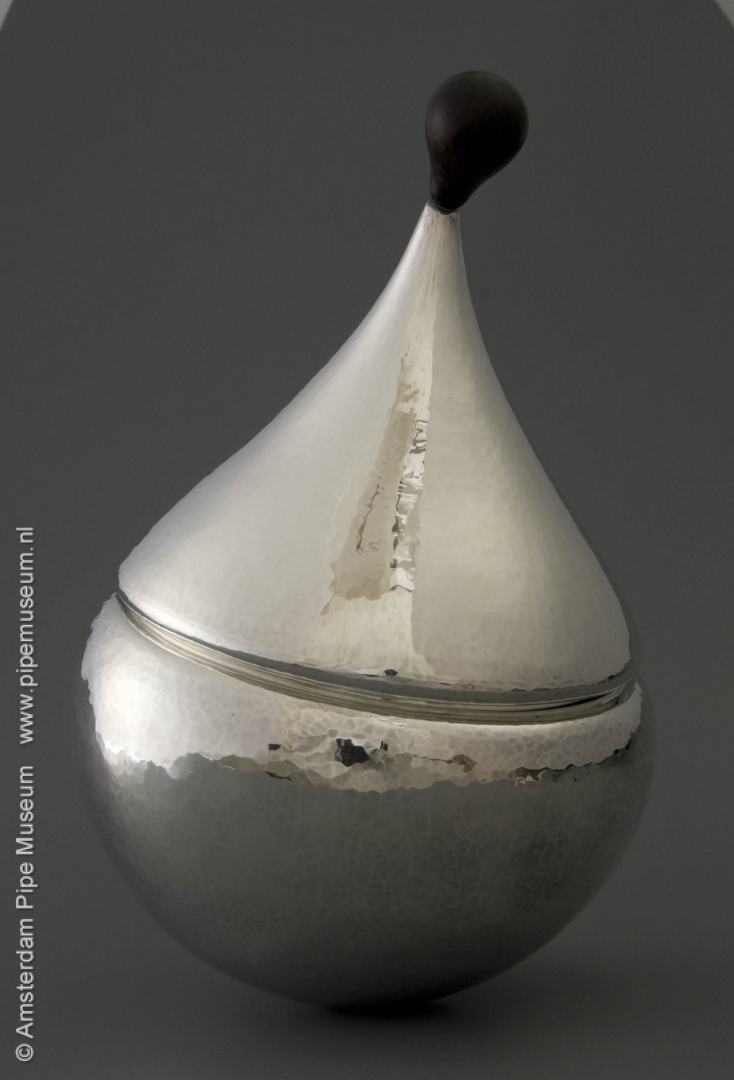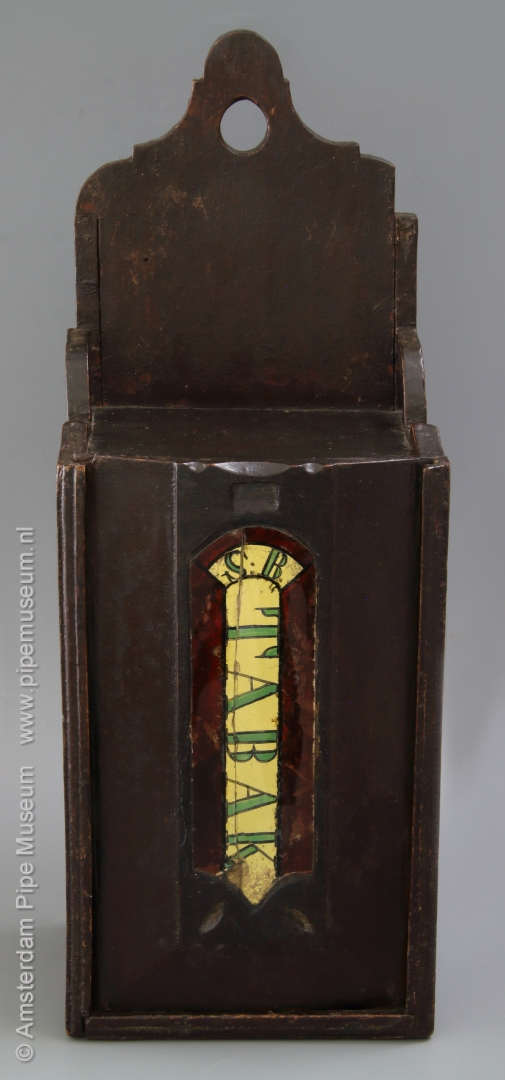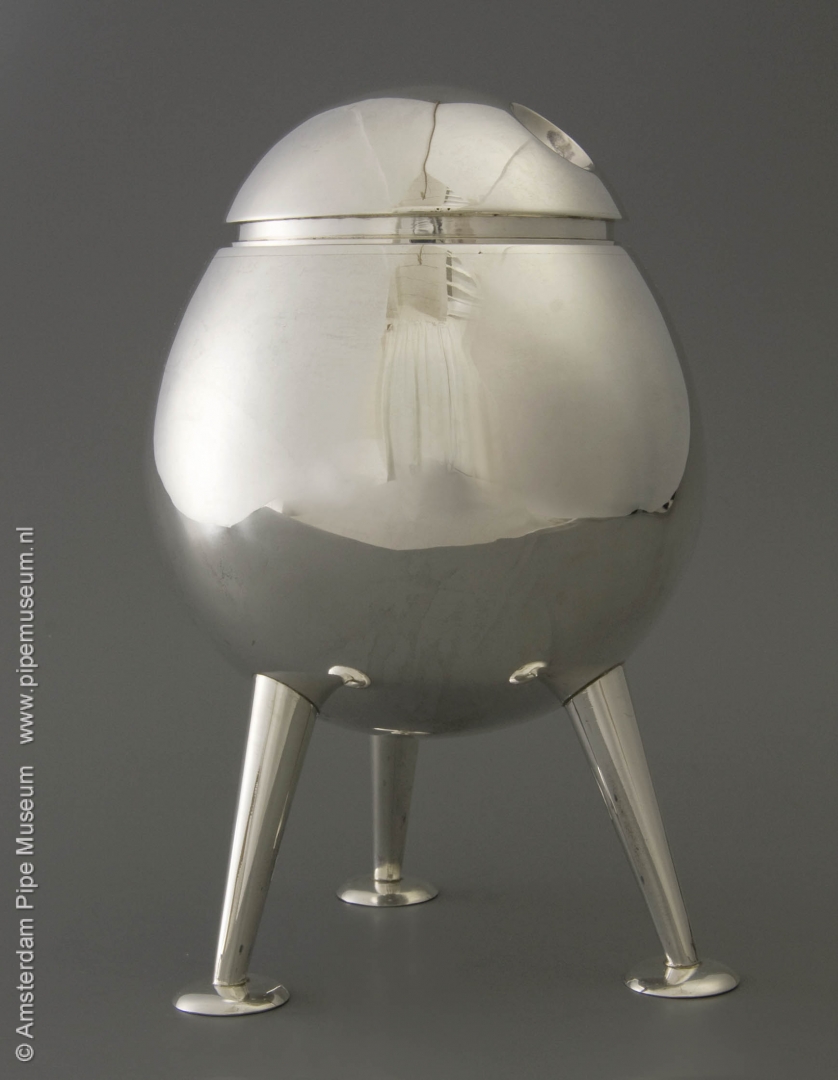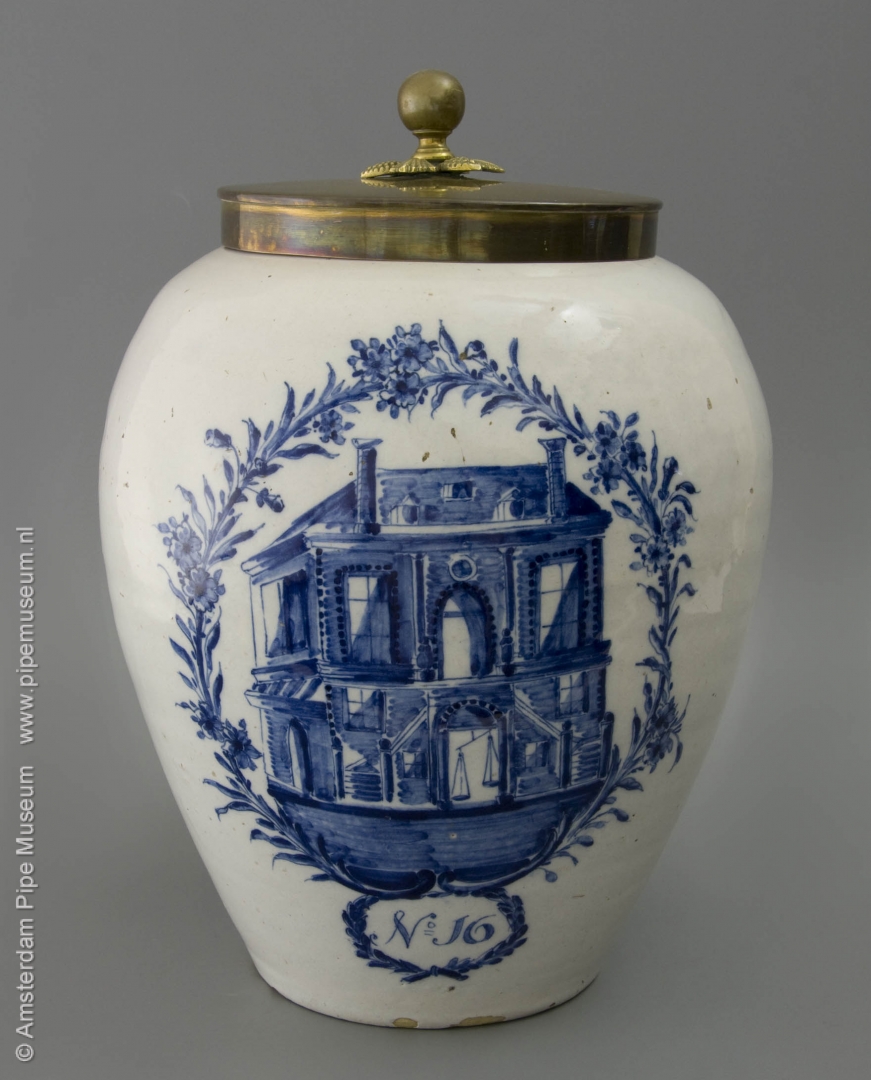Tobacco jars
The earliest period of smoking, the smoker went to the tobacco inn for pipe and tobacco. Smoking at home gradually became customary, so people feel the need to keep a supply of tobacco there. Tobacco jars are the means to store the tobacco safely.
A tobacco jar is spacious enough to put your hand in, has a lid and preferably an inner lid to prevent the tobacco from drying out. In the better circles, the tobacco jar is not only practical, but mainly intended to impress and of course to display hospitality. So preferably in silver and in the latest fashion. The more popular chic is the jar made in blue painted or polychrome Delft earthenware, also for the show. Strangely enough, the tobacco jar remains a typically Dutch article for a century.
The cheaper counterpart is the tin or lead tobacco jar. Even cast iron has been used as a material. Especially the versions in the beautiful blackened fer de Berlin stand out. In the nineteenth century, the tobacco jar became an international commodity that was made and used everywhere. In the same century, the choice broadened with all kinds of earthenware tobacco jars made in series, mostly in figural form. Much of this good is cold painted and not very durable.
The much larger Delft tobacco jars are intended for the tobacco store, and more specifically for snuff. Hence, some mention the word rappé, the French name for snuff.
A typical Dutch item is the wooden tobacco box, comparable to the tea caddy but with a single compartment because in that period people only smoked one type of tobacco. The tobacco box makes way for the round, turned wooden tobacco jar, often constructed from staves. They remain in use well into the twentieth century. The decrease in pipe smoking caused the tobacco jar to disappear from the table. The smoker used a tobacco bag because the quantities were getting smaller. The Dutch peasantry use a hanging tobacco box, a wooden box with a back plate with hanging hole. If you wanted to stop your pipe you had to take this specific tobacco box off the wall.
At the end of the twentieth century, another special series of silver tobacco jars was created. They were the initiative of the Silver in Motion foundation. Several promising designers or silversmiths jointly created a series of twelve remarkable designs. They represent the modern design idea of an article that had meanwhile lost its status and was no longer used in domestic circles.
